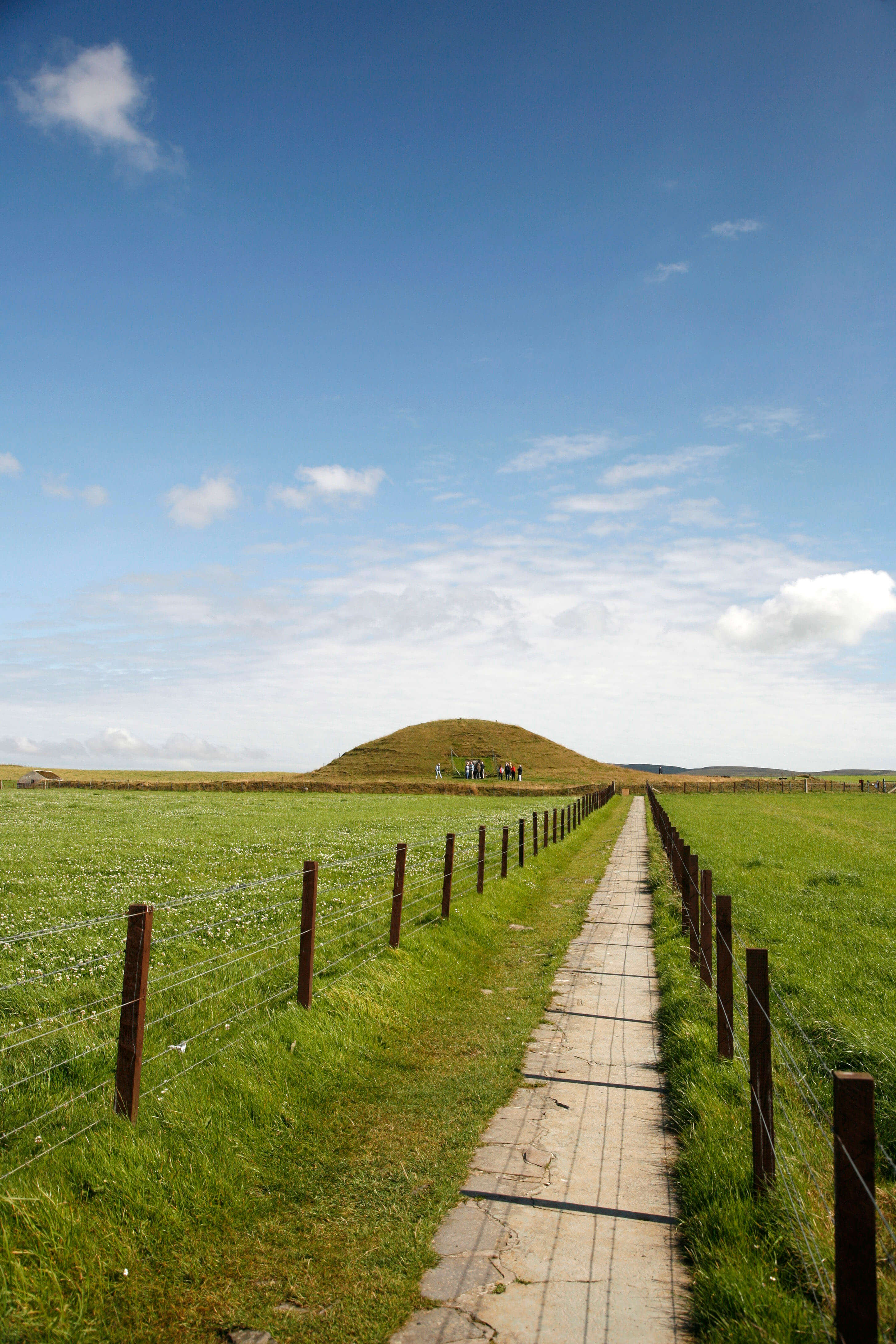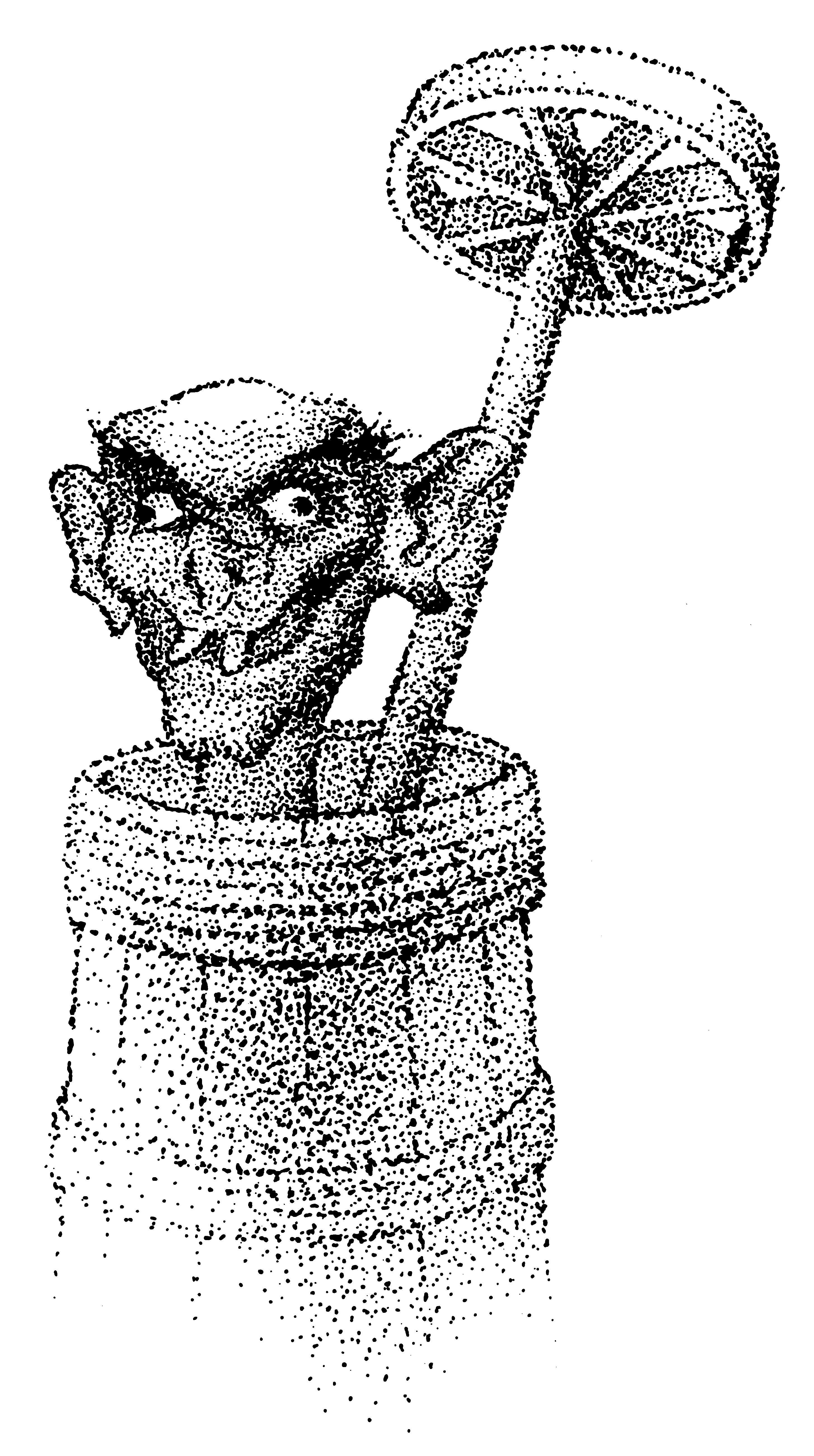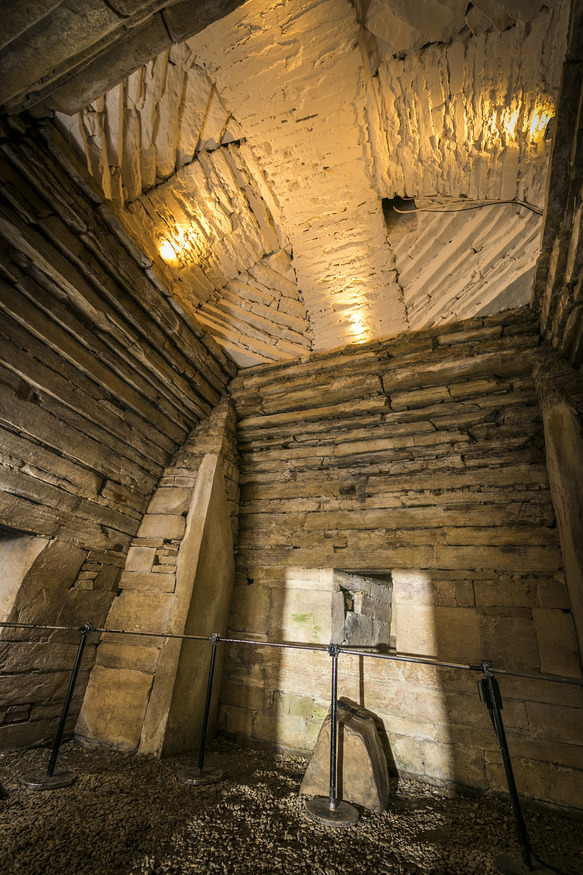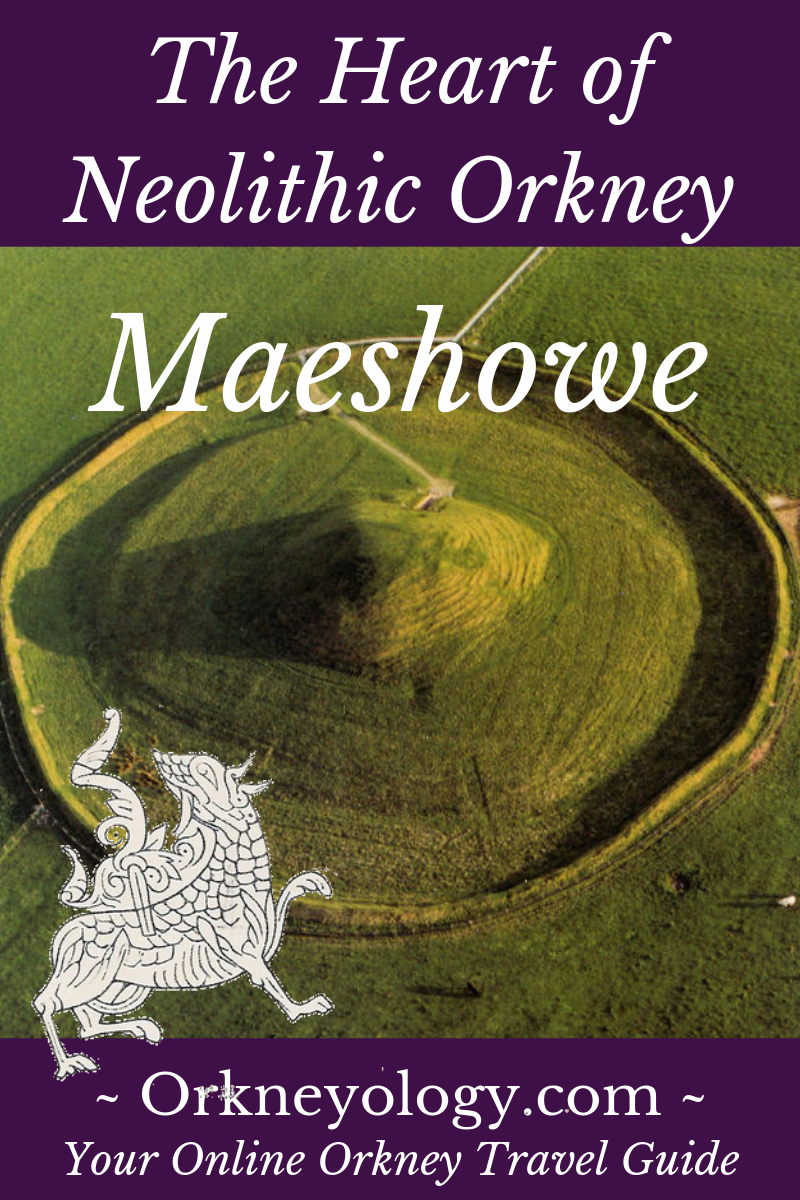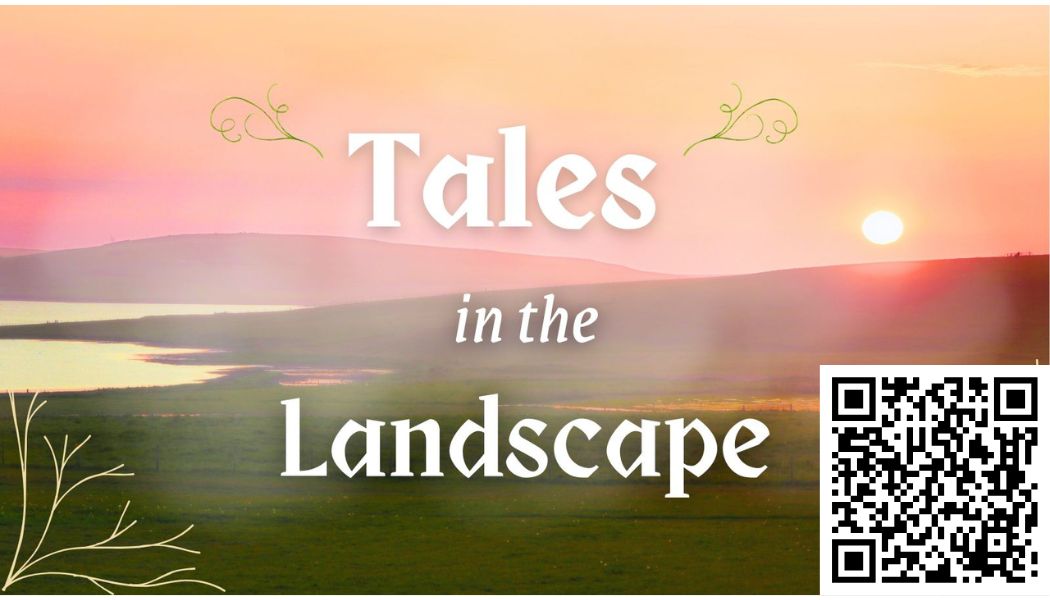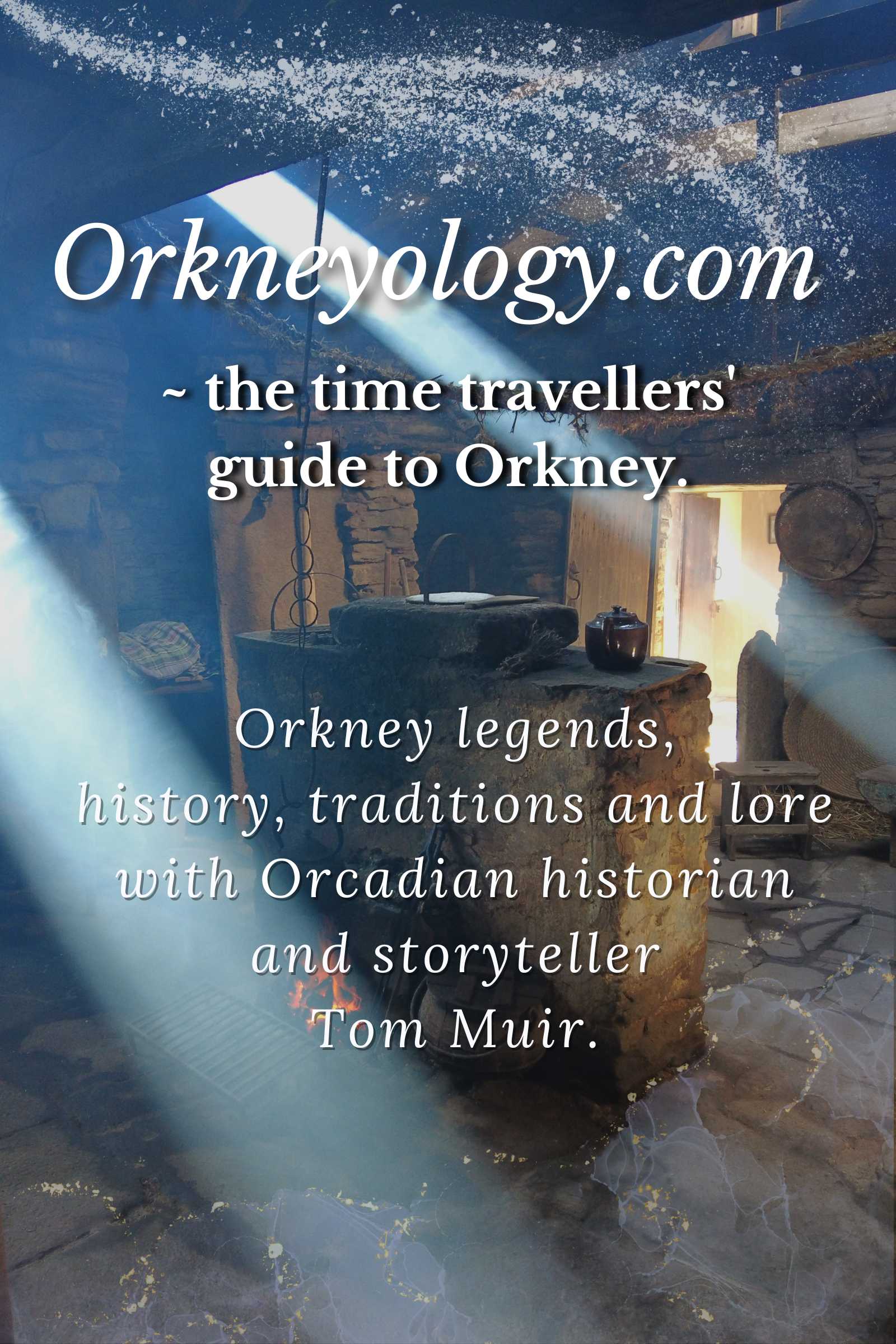The Mystery of Maeshowe
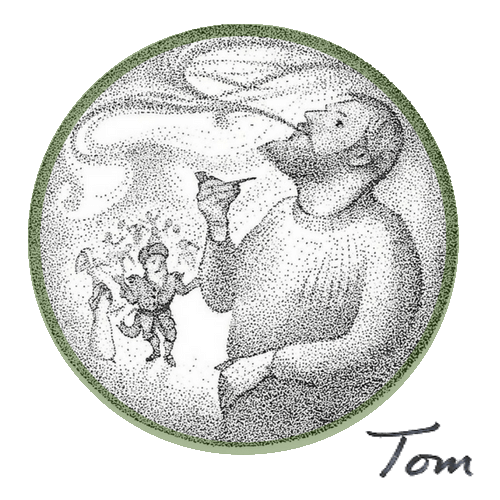
The great Neolithic tomb of Maeshowe is the grandest and most impressive tomb in Orkney.
Built about 5,000 years ago, it's older than the pyramids built by the Pharaohs of Egypt.
The structure sits amongst farmland in Stenness. It forms part of the Heart of Neolithic Orkney World Heritage Site and is linked to the great ceremonial stone circles nearby.
What's on this page?
What we know .... and don't know
Beware the hogboon - an Orkney story
What we know ... and don't know
Maeshowe was built on a natural hillock, only slightly higher than the surrounding land.
This mound was levelled in Neolithic times and covered with a layer of white clay to create a flat surface to build on, or maybe for a ritualistic purpose as the layer is quite thin.
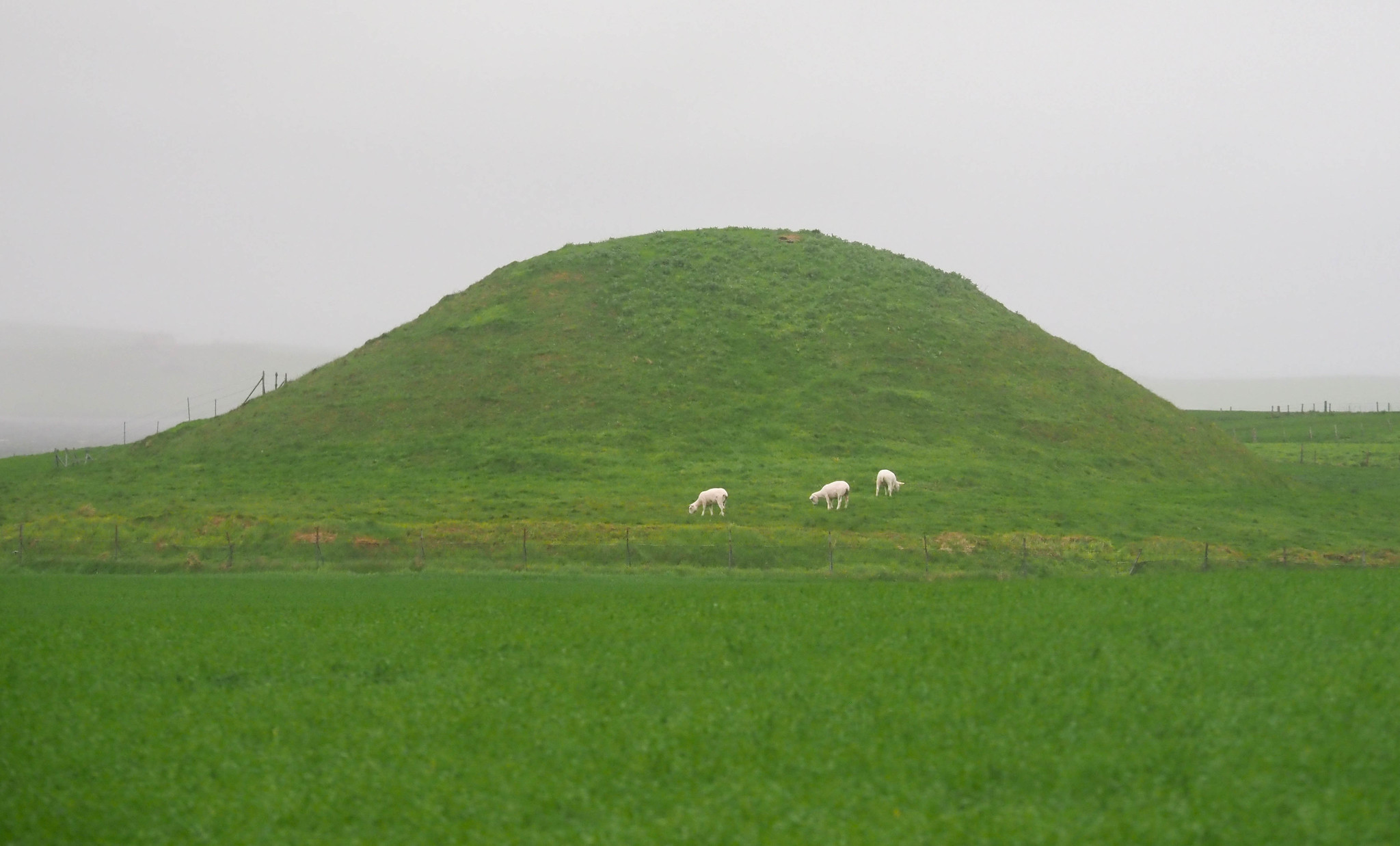
I once took a cut out of the mound, showing the construction of the earth mound over the leveling layer of white clay and the natural clay underneath.
Don't worry - I didn’t just go along and dig a chunk out of a much loved and treasured monument. I was part of a small team of diggers led by my old pal Dr Colin Richards in 1991.
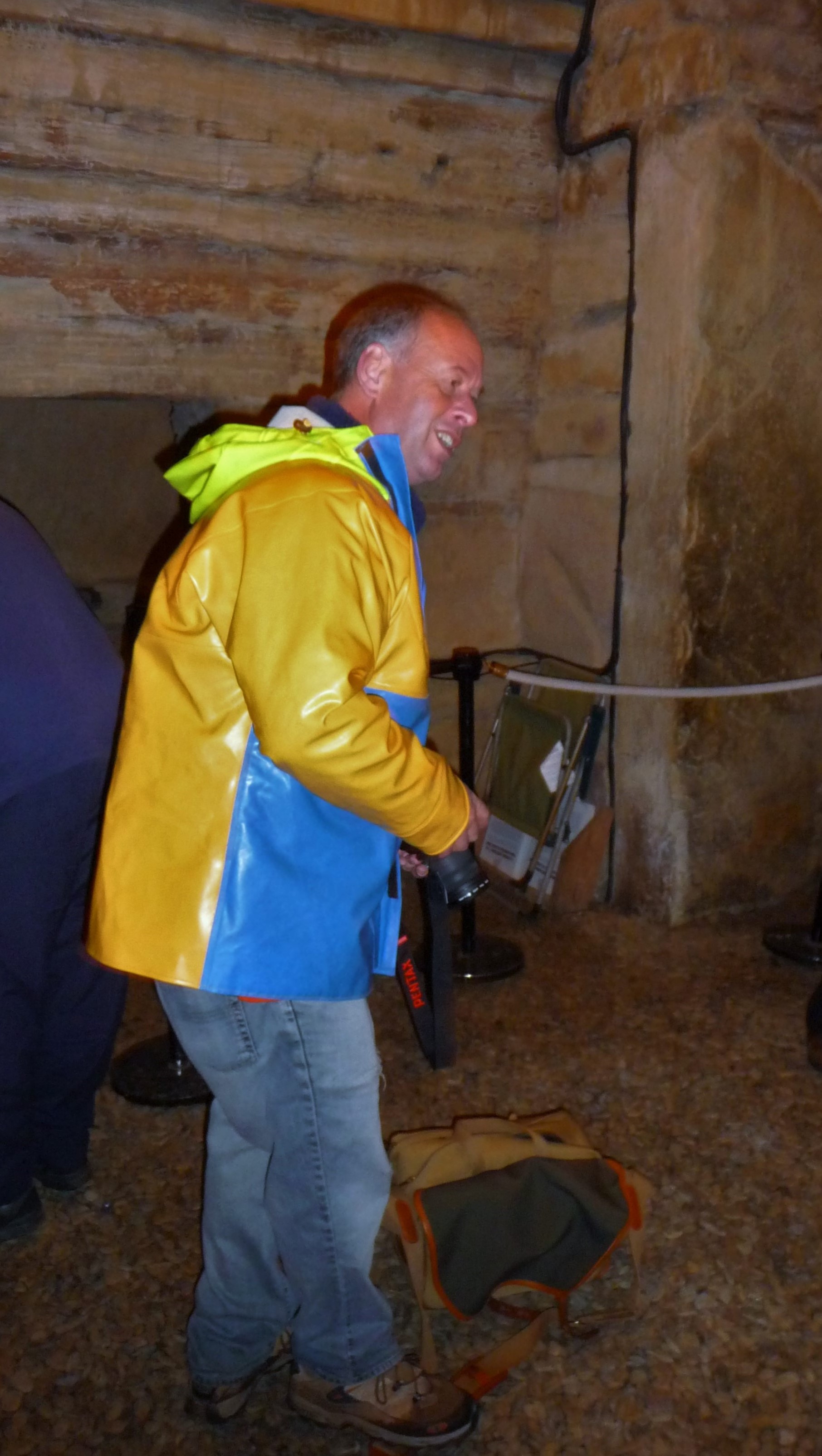
Originally, a Neolithic house had been built on this site, which the tomb was later built over. Very little trace of this house survives under the tomb, but enough to show that there had been one.
Who lived in this house is, of course, impossible to say. Was this person remembered and revered, to have such a important memorial erected in the same location?
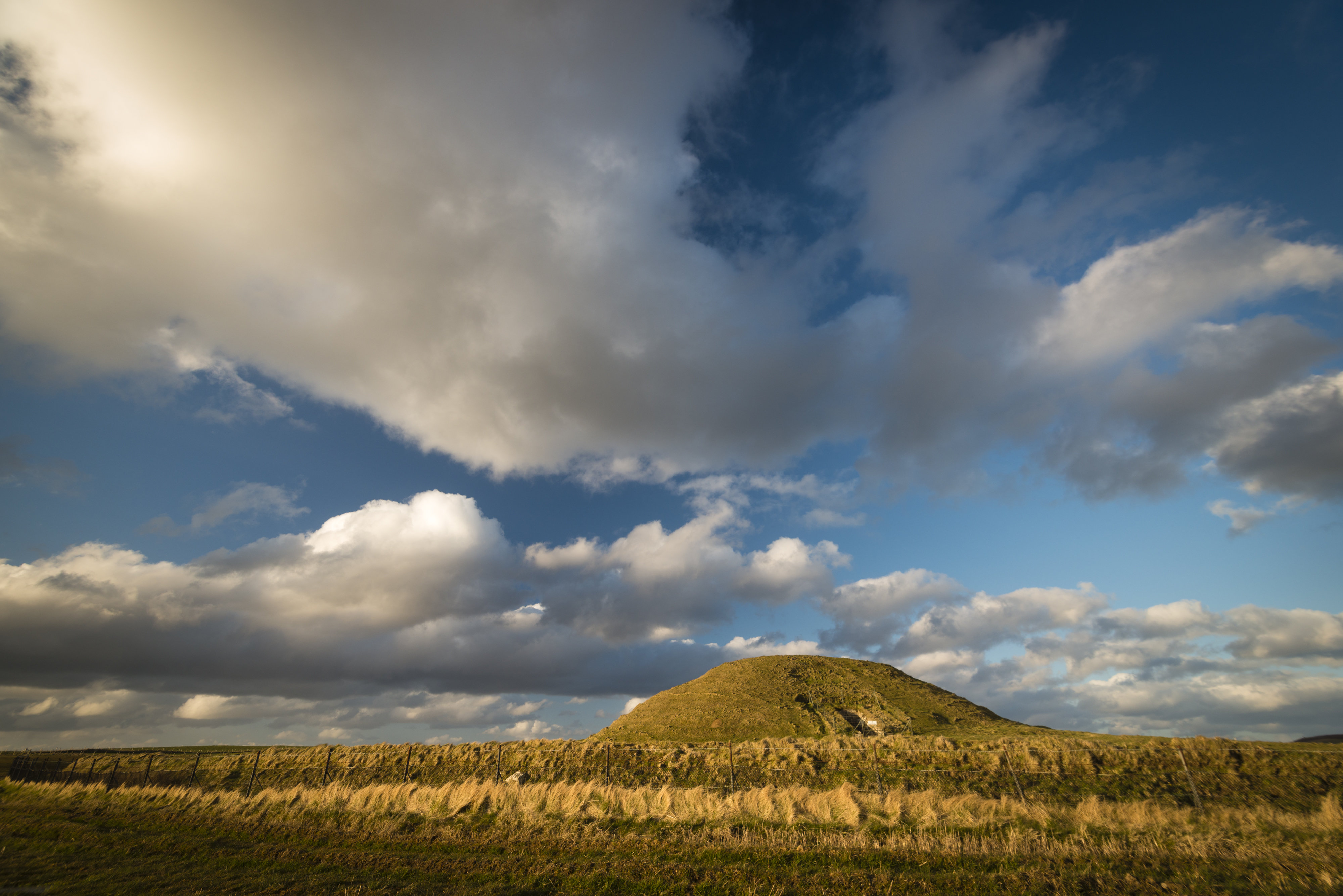 Photo courtesy of Historic Environment Scotland
Photo courtesy of Historic Environment ScotlandStanding stones in Maeshowe
When the tomb was built, the first things erected were four standing stones, which form the corners of the main chamber.
These stones serve no architectural purpose and in no way strengthen the structure, so the builders must have had other reasons for placing them here.
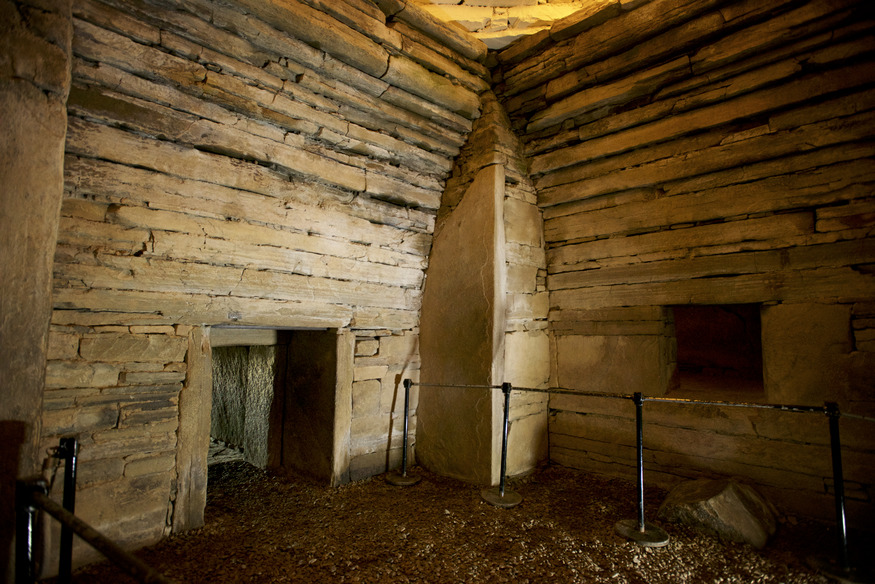 Maeshowe's entrance (left), one side chamber and interior standing stones. Photo courtesy of Historic Environment Scotland
Maeshowe's entrance (left), one side chamber and interior standing stones. Photo courtesy of Historic Environment ScotlandA socket for a single standing stone lies at the back of the tomb, which I excavated in 1991 during Dr Colin Richards excavation.
The socket was about a meter deep (3 feet), and the packing stones were at one side still in-situ. It seems that the stones from the other side, used to wedge the standing stone in an upright position, had been removed in antiquity.
The size of the socket is of a similar size to those at the Stones of Stenness, suggesting that this one once held a large stone.
Some speculate that there might have been a stone circle on the site, but I would advise caution. One stone does not a circle make!
It is, however, a possibility and an attractive one at that.
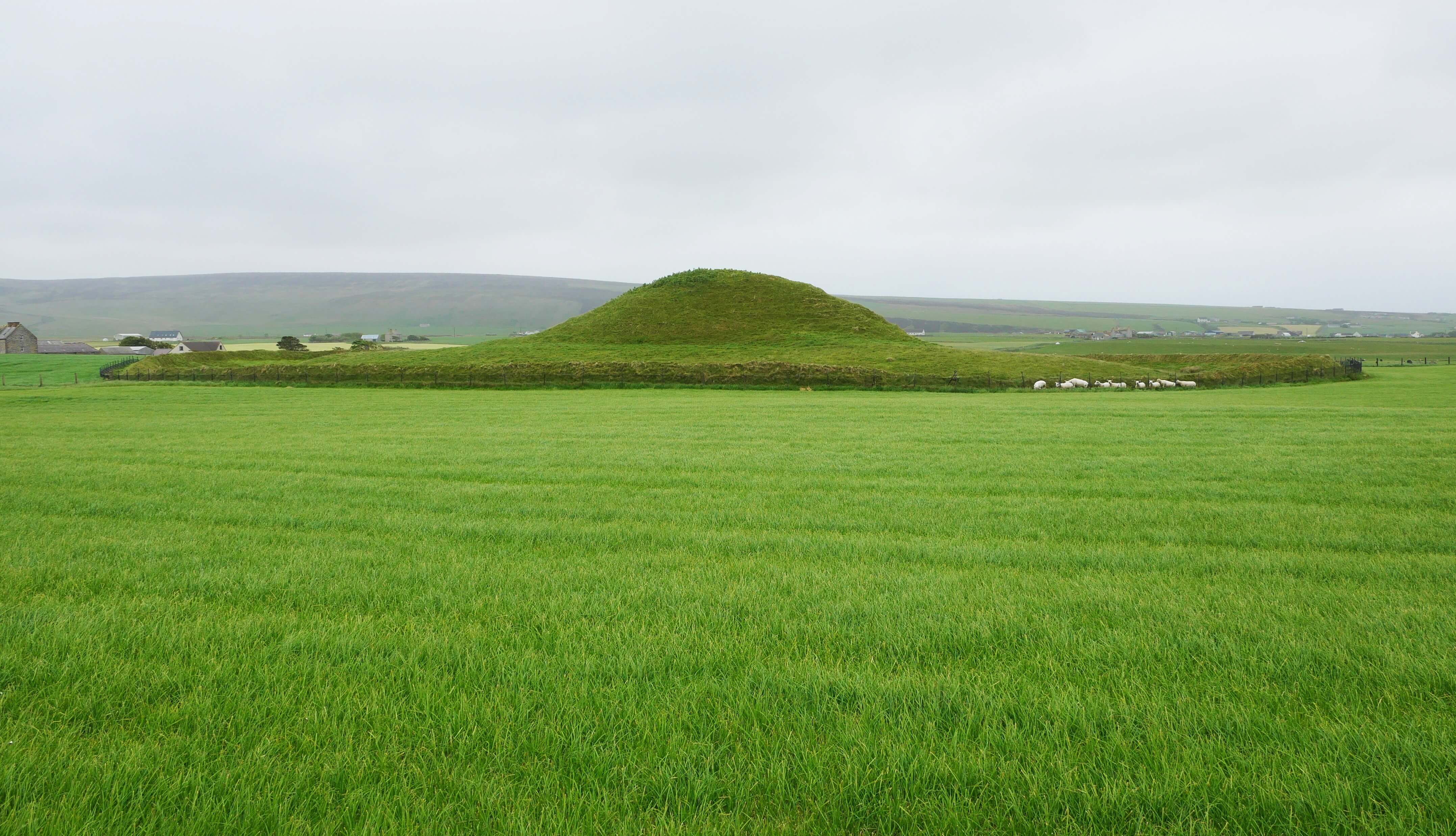
Intriguing connections
So, where did the Maeshowe standing stones come from? Were they quarried anew or were they perhaps older standing stones reused?
Recent excavations at the Ness of Brodgar have revealed two standing stones outside the front of Structure 10, which has been nicknamed the ‘Neolithic Cathedral’.
Structure 10 was the last structure built on that site, and its entrance is aligned with Maeshowe. Another standing stone was found in the middle of the Ness site, as though this stone was the heart of the complex of earlier buildings.
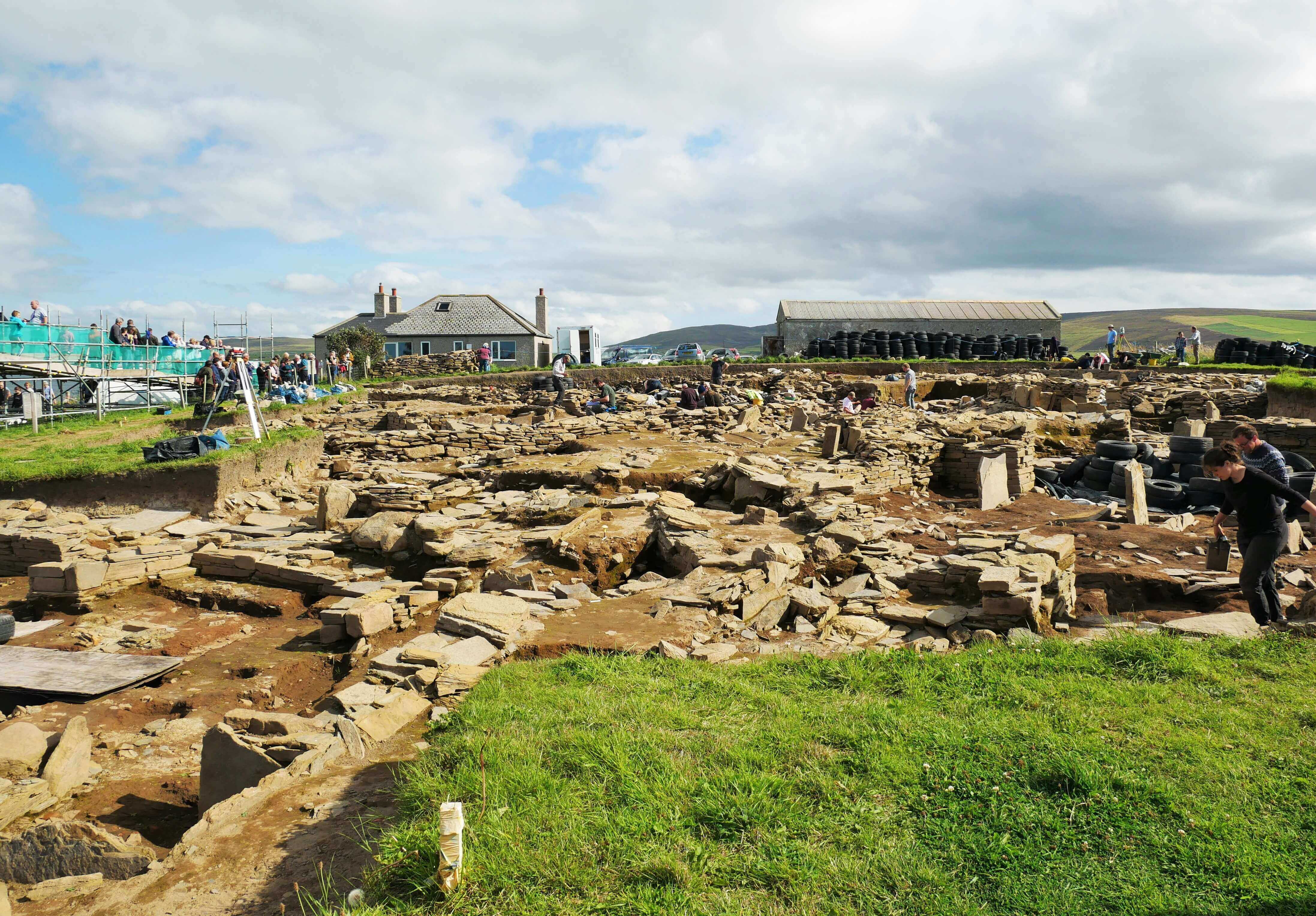
Find more about Structure 10 and the ongoing dig at Ness of Brodgar here.
The sequence of events at Maeshowe further parallels others in Orkney’s archaeological record.
The broch site of Howe in Stromness, known as the Howe of Howe, started off as two early Neolithic houses with a Maeshowe-type tomb built overlying part of one house.
This tomb was destroyed with the building of a round house in the Iron Age (c500 BC), and later a broch with village.
Not only did the tomb at Howe lie over earlier houses, like Maeshowe, but a socket for a standing stone was also found next to the tomb.
Had this been a solitary stone or were there originally more?
Unfortunately, this excavation was done in too much haste. At the time, the excavators didn't fully understand the Neolithic phases. Much work has been done in Orkney on Neolithic sites since that time (1982), making more judicious investigations possible.
Maeshowe's design
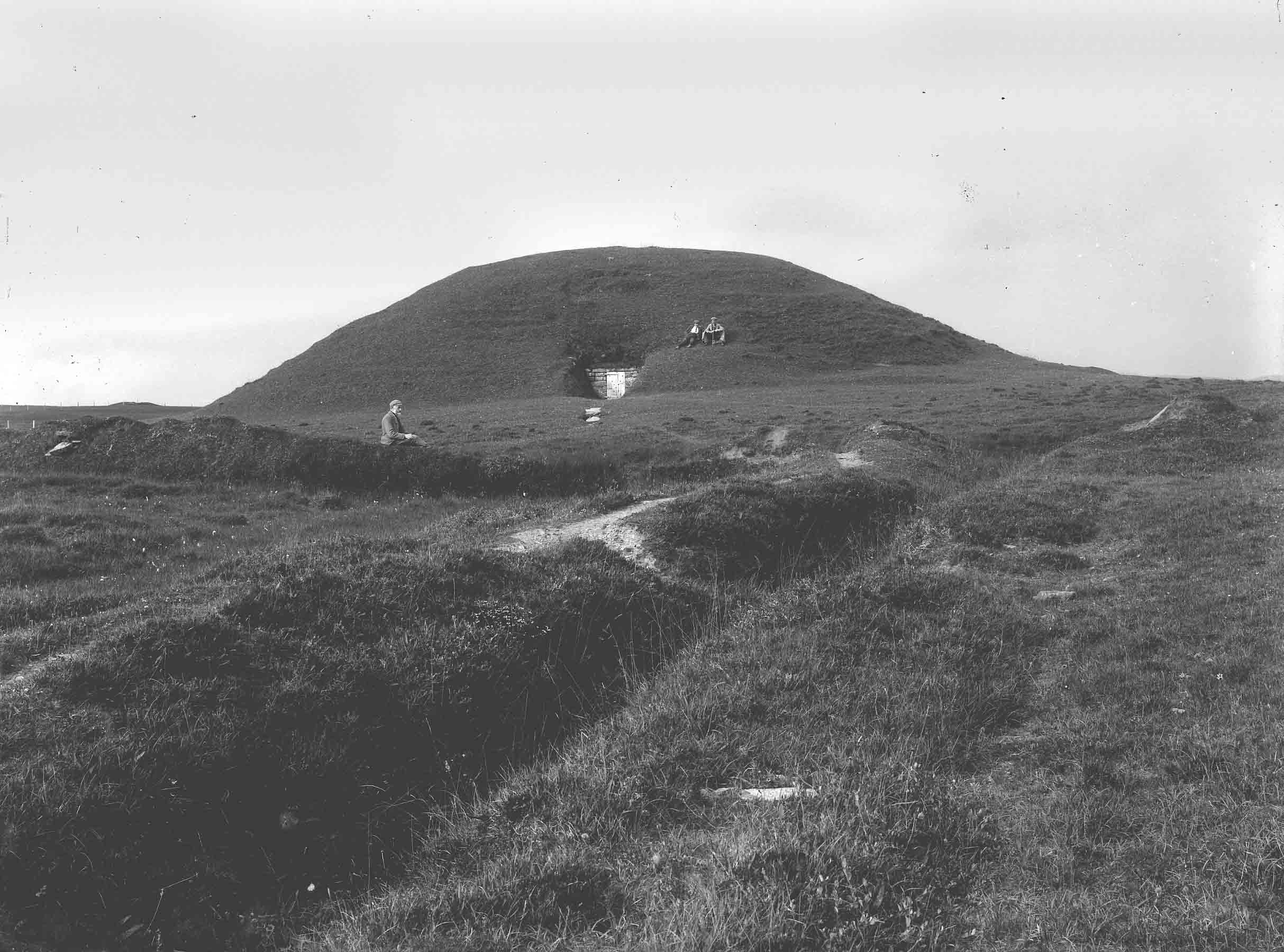 Photo courtesy of Orkney Library & Archive
Photo courtesy of Orkney Library & ArchiveThe mound is a pretty impressive one, measuring 82 feet (25 meters) in diameter and 23 (7 meters) high. It has a long passageway, 47 ½ (14.5 meters) long, constructed from huge lengths of stone slabs.
At 4 ½ feet (1.4 meters) high, you can walk in bent double. This ‘bowing’ posture might have been deliberate, as you pay homage to the ancestor(s) or spirit(s) that dwell inside.
A blocking stone, or ‘door check’, occupies a recess near the entrance. The stone is so perfectly balanced that you can rock it easily, despite its huge weight. It seems that this was a way of sealing the tomb.
The front section of the passage has been rebuilt, but from the door check onwards it's original.
The passage opens into a central chamber, which is square and measures almost 15 feet (4.5 meters) across and the same high.
How high the chamber was originally is not known, as the top of the roof was broken in.
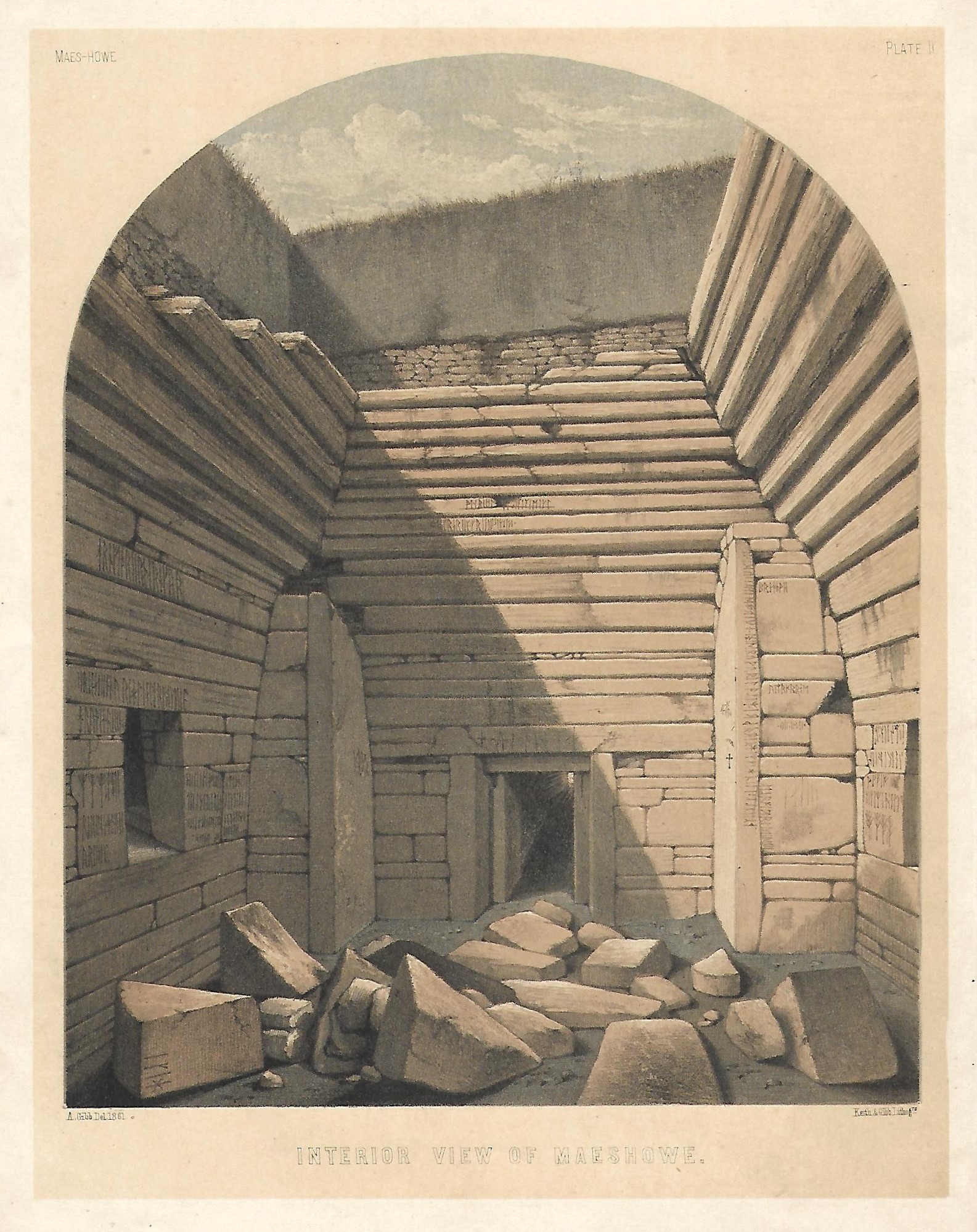
The white painted brick roof was built over the Neolithic masonry in the 19th century.
A cap of concrete, covering the roof, was added in the early 20th century.
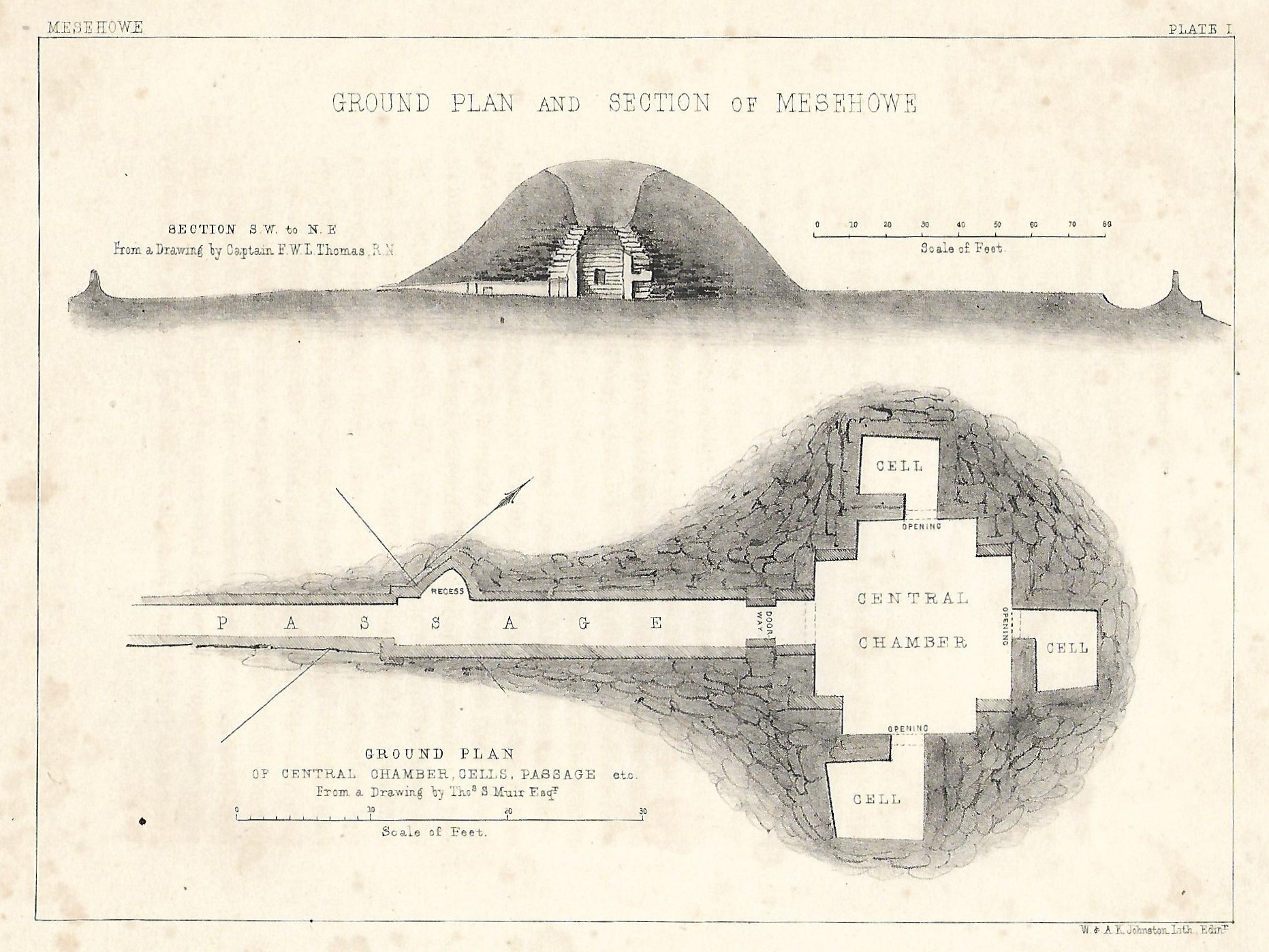
Three small side chambers branch off the large chamber. These are raised above the floor level with blocking stones lying on the floor outside them.
The henge of Maeshowe
Maeshowe is surrounded by a ditch, or ‘henge’, with an earth wall around it.
It was originally dug in the Neolithic but seems to have been modified in the Viking period.
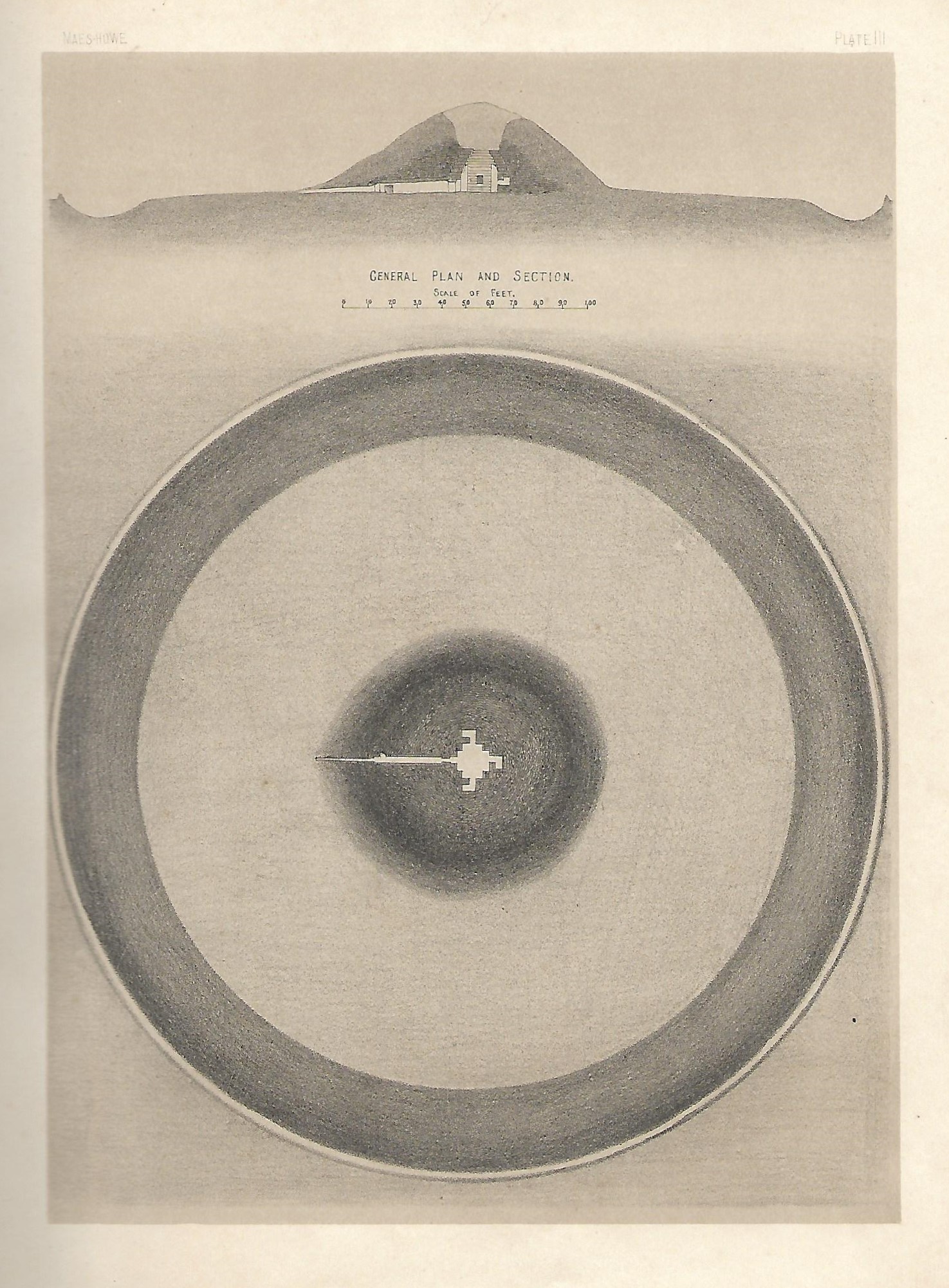
The original Neolithic wall was made of turf and stones, about 6 ½ feet (2 meters) high and the same wide. The original wall seems to have collapsed into the ditch early on in its life.
In the early Viking period, 9th century AD, more rubble was deposited over the remains of the Neolithic wall, creating the bank that we see today. There is speculation that the great Neolithic tomb itself may have been reused in the Viking Age, when it was already 4,000 years old.
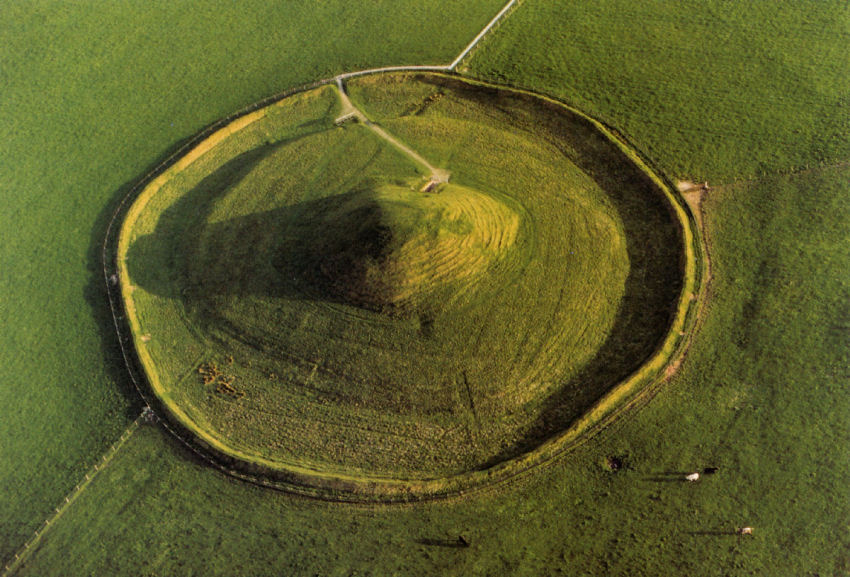
What's in a name?
The name Maeshowe has been the source of some discussion over the years.
In 2010 Dr Berit Sandnes of Lund University, Sweden, came up with an explanation that makes sense. She thinks that ‘maes’ is from Old Scandinavian word mað, the ‘ð’ is pronounced as ‘th’, which means ‘meadow’. Howe is from Old Norse haug, pronounced howg, meaning a mound.
Meadow Mound does make sense and fits in with some other ‘maes’ place names, but not all of them.
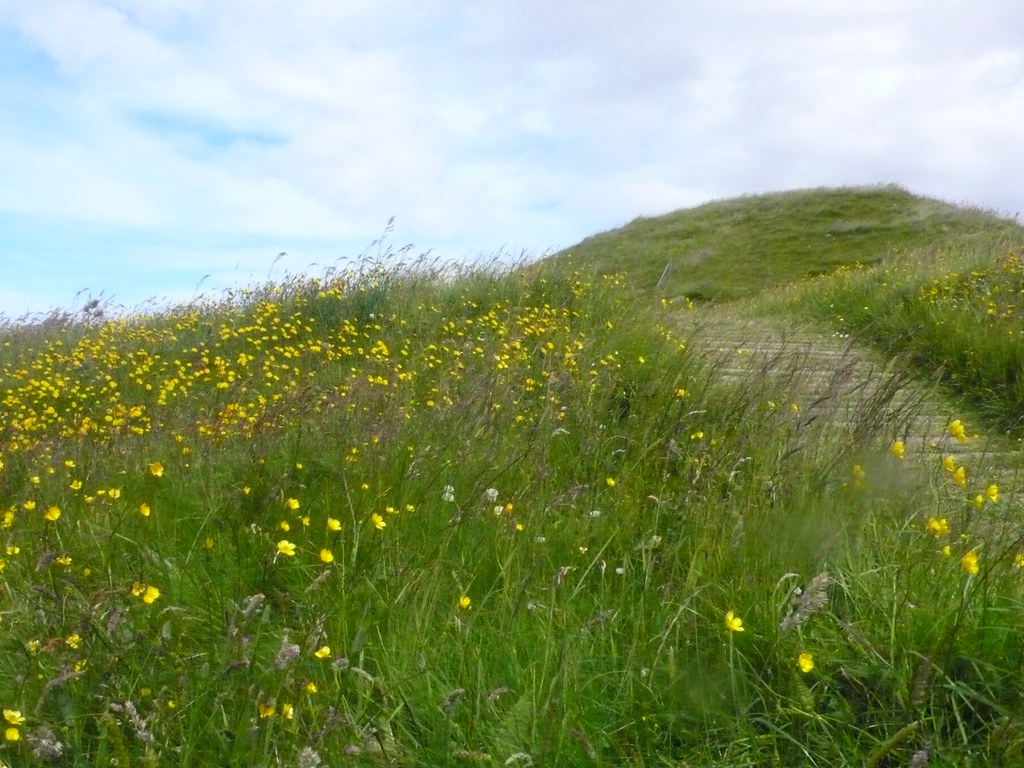
In Orkneyinga Saga we find a reference to it under the name of Orkahaugr, suggesting that the Vikings used the name 'Orkney Mound' rather than Maeshowe.
For many years Historic Scotland (as HES was then known) called the site Maes Howe, which infuriated local folk. They finally changed it to the correct Maeshowe, and put the ‘d’ back in the Ring of Brodgar. Nobody in Orkney ever called it ‘Brogar’!
A careless treasure hunter
In July 1861 James Farrer, Conservative MP for South Durham, got permission from the landowner to open Maeshowe. Farrer was an avid antiquarian excavator, but his methods left much to be desired and he didn’t bother to record what he’d found.
We have records of some of the sites that he excavated - written by others - where Farrer is quoted as saying, “Nothing of interest was found.”
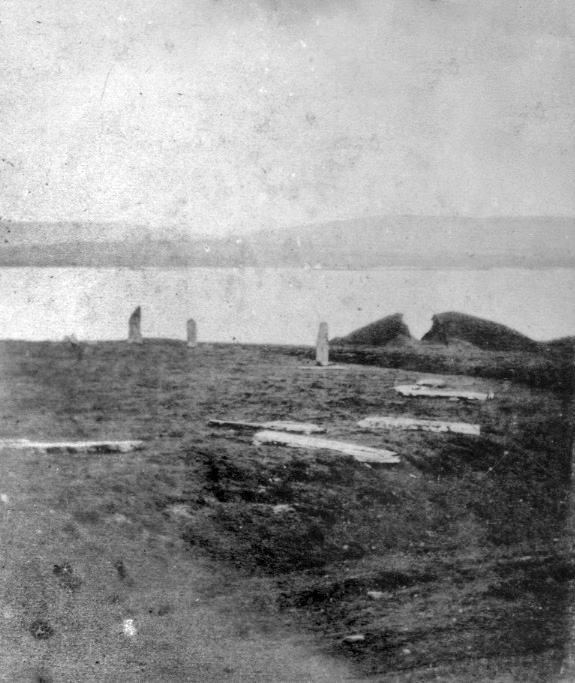 An example of Farrer's roughshod methods at the Ring of Brodgar's Fresh Knowe. Photo courtesy of Orkney Library & Archive
An example of Farrer's roughshod methods at the Ring of Brodgar's Fresh Knowe. Photo courtesy of Orkney Library & ArchiveAs a treasure hunter, he was only interested in nice artefacts that could go into the Society of Antiquaries Museum in Edinburgh (now National Museums Scotland), or maybe retained by himself.
Luckily, George Petrie, Sherriff Clerk for Orkney, went in Farrer's destructive wake and wrote down what he saw. Some remains, like a chambered tomb at Pickaquoy, Kirkwall, had been utterly destroyed. In this case, the destruction was so Farrer could retrieve a spiral carved stone built into the wall.
While some treat Farrer with more sympathy these days my former boss, John W. Hedges, had this to say about him: [Farrer had] "a rapacious appetite for excavation matched only by his crude techniques, lack of inspiration, and general inability to publish."
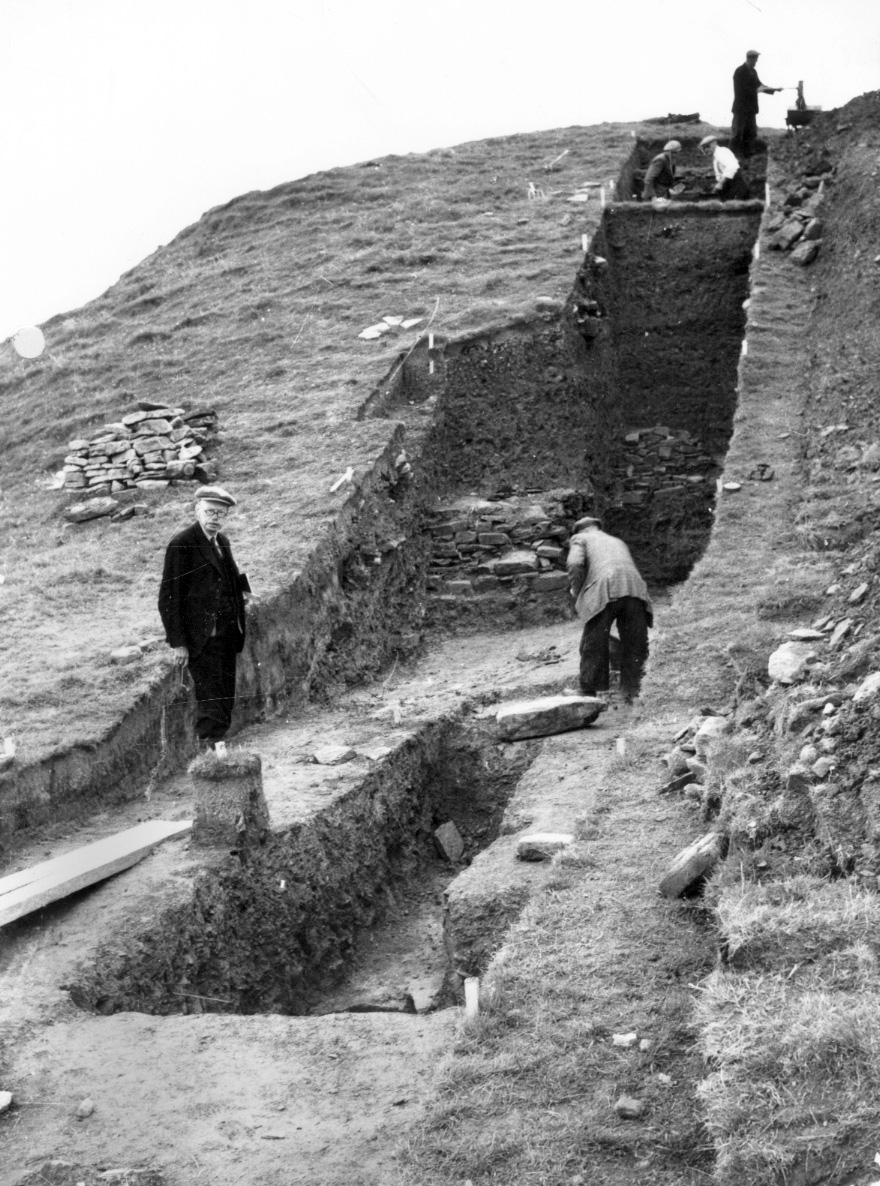 A later excavation by Prof. Gordon Childe, seen at bottom left.
Photo courtesy of Orkney Library & Archive
A later excavation by Prof. Gordon Childe, seen at bottom left.
Photo courtesy of Orkney Library & ArchiveBeware the hogboon
Farrer was warned by local folk that the mound contained a spirit. In his book about the site (privately published and the only thing that he ever recorded) Farrer said:
"The country people state that the building (Maeshowe) was formerly inhabited by a person named Hogboy, possessing great strength."
This was a creature known in Orkney as a ‘Hug Boy’ or ‘Hogboon’, from the Old Norse haugbui, meaning mound dweller.
The spirit protected the family on whose land its mound stood. In return for good fortune the family had to share its produce with the hogboon. Milk or ale was poured over the mound, and butter and ground barley or bannocks were given as an offering.
Should the family neglect this duty, the hogboon would make their lives a misery.
Click below to hear Tom Muir tell the Orkney folktale
~ The Hogboon of Hellihowe ~
Vikings!
Farrer got a team of labourers to dig into the top of the passageway but found it to be blocked with rubble. He then turned his attention to the top of the mound, digging into it.
He soon found that he was not the first to have done that – the Vikings had got there first.
Orkneyinga Saga relates the story of how, just before Christmas (Jule) in 1152, Earl Harald Maddadson was planning a surprise attack on his enemy, Earl Erlend Haraldson, who had ousted him from the earldom of Orkney.
Harald and his men were caught by a sudden blizzard. They were forced to take shelter in Maeshowe, where two of his warriors went insane because of their fear of the mound.
I have heard people say that this was the date when the mound was first opened, but that's laughable. Breaking into a tomb takes a lot of time and effort. It's more likely that the tomb had been broken into from the roof at an earlier period and left open.
Viking graffiti
Farrer’s labourers had cleared out the chamber “…after a few days labour.” The only archaeological find seems to have been one piece of human skull.
But Farrer did discover the largest collection of runic inscriptions outside of Scandinavia. The walls were covered with inscriptions and carvings of mythical creatures, including the famous Maeshowe dragon.
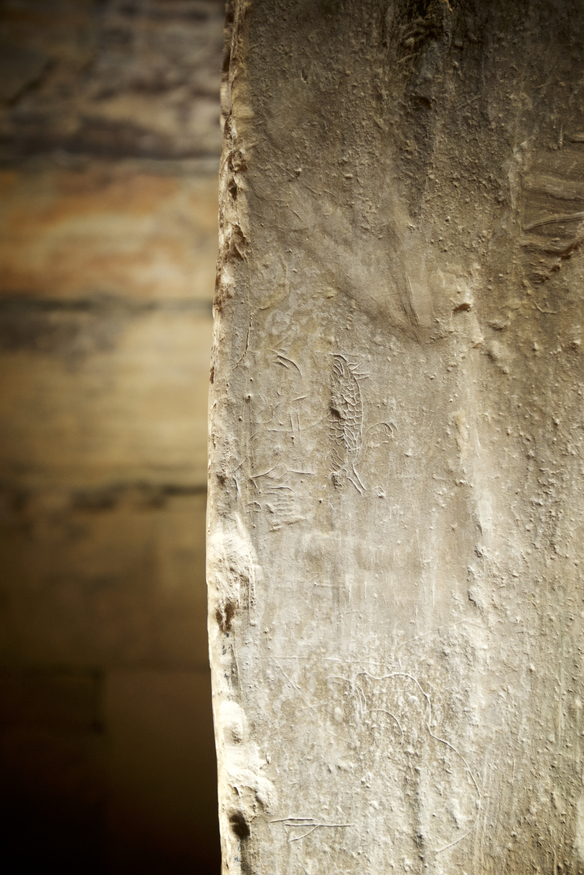 Photo courtesy of Historic Environment Scotland
Photo courtesy of Historic Environment Scotland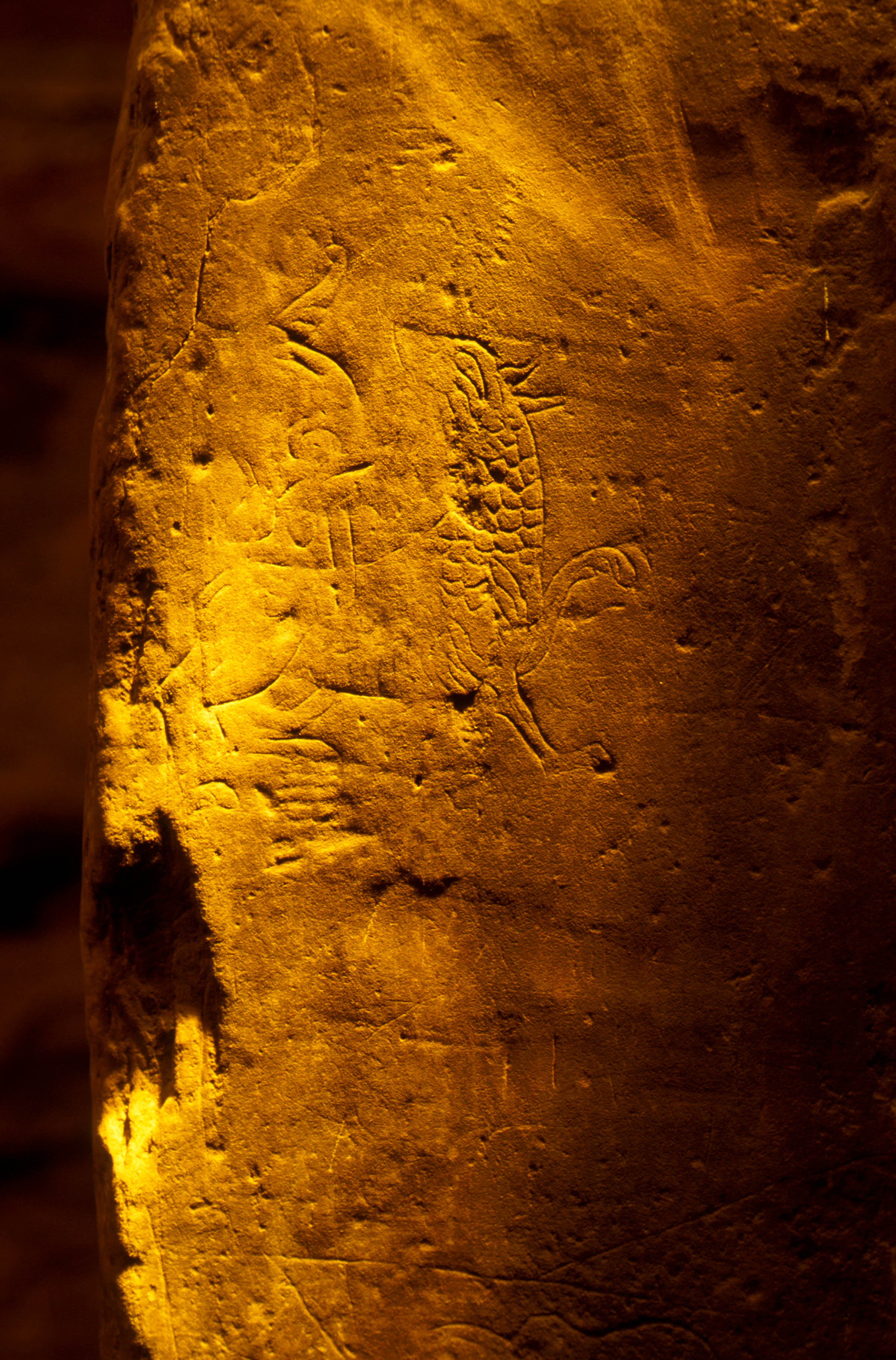 Photo courtesy of VisitScotland
Photo courtesy of VisitScotland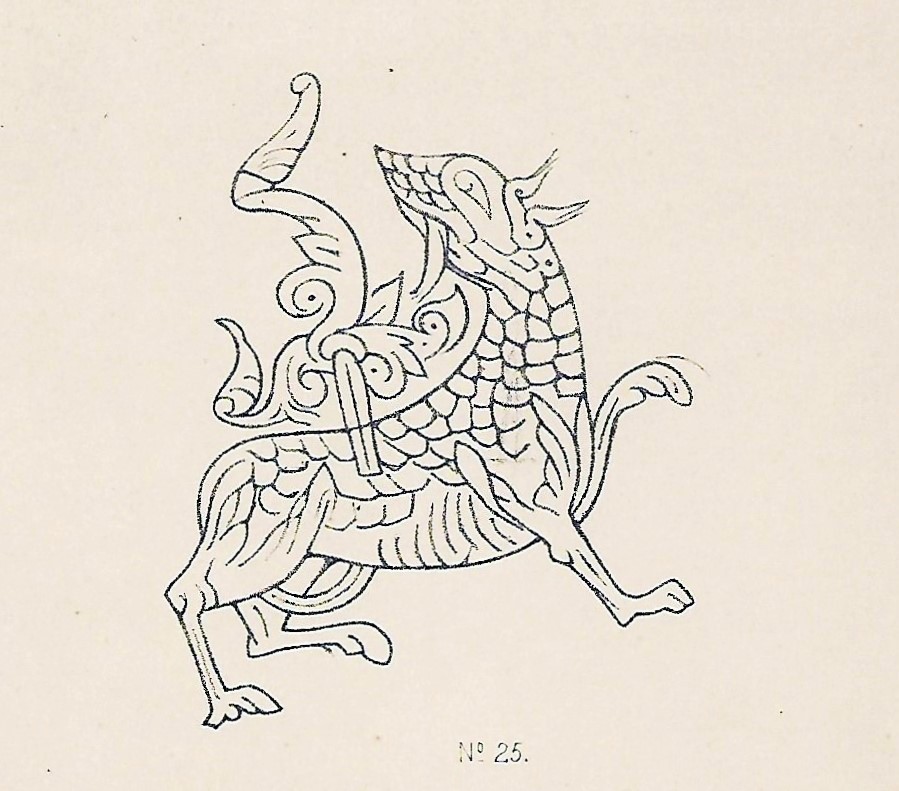
The runic inscriptions are graffiti, mostly recording who had been there and carved the runes.
Others are showing off their skill at carving runes, such as the cryptographic twig runes – the work of a highly skilled writer.
I was brought up calling these ‘tree runes.’
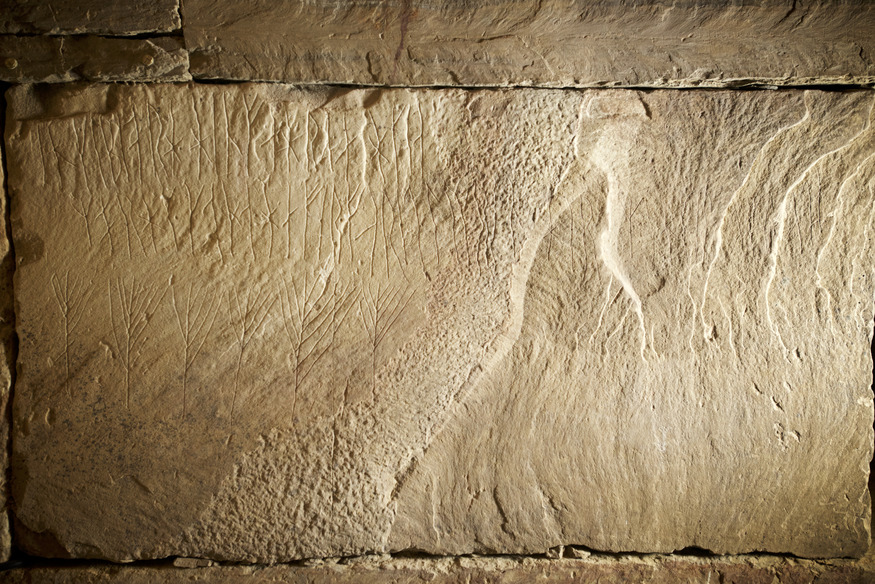 Photo courtesy of Historic Environment Scotland
Photo courtesy of Historic Environment Scotland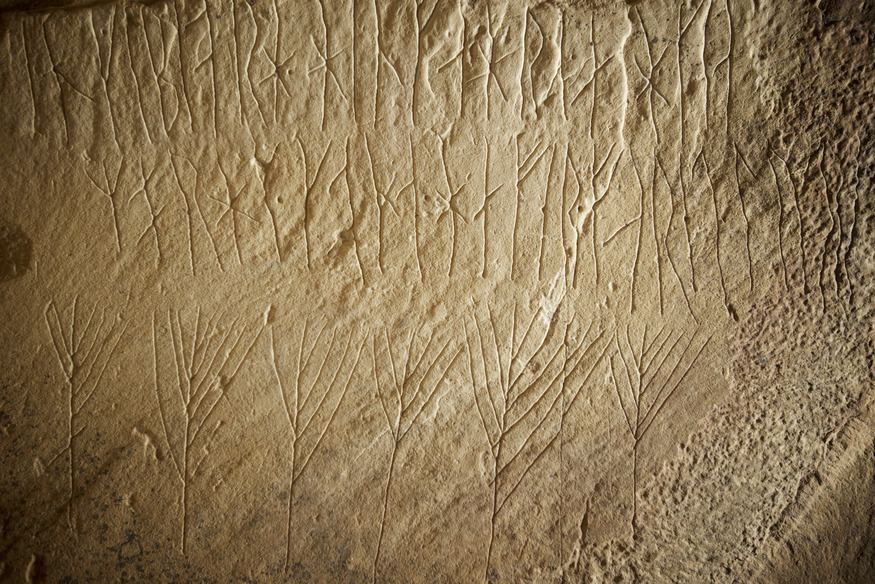 Photo courtesy of Historic Environment Scotland
Photo courtesy of Historic Environment ScotlandThe runes comment on women, too, including one weary carver who is killing time waiting for his friend to finish having sex.
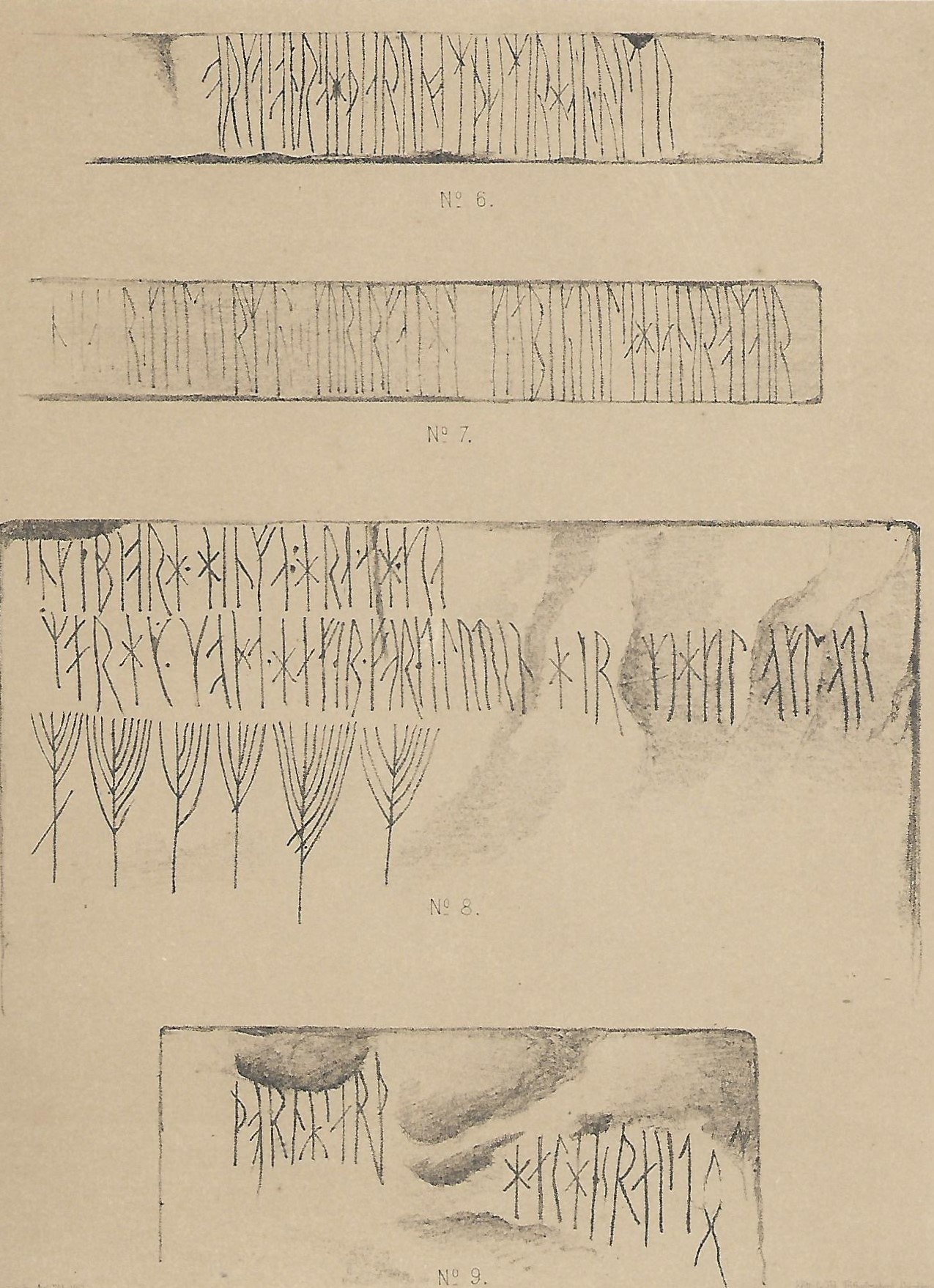 It was these runic inscriptions that led Farrer to publish his excavation in a private book – it was the runes, and not the tomb, that interested him.
It was these runic inscriptions that led Farrer to publish his excavation in a private book – it was the runes, and not the tomb, that interested him.Njal's Saga
One of the inscriptions has great significance to some of my Icelandic friends.
'These runes were carved by the man most skilled in runes in the western ocean', 'with the axe which belonged to Gaukr Trandilsson in the south of Iceland'.
The Icelandic scholar and one of the translators of Orkneyinga Saga, Hermann Palsson, identified the carver as Thorhallr Asgrimsson, who was the great-great-great- grandson of the man who killed Gaukr Trandilsson some 200 years earlier.
The story of the killing is told in Njal’s Saga. Did he really have such an old axe as a family heirloom, or was this just boasting?
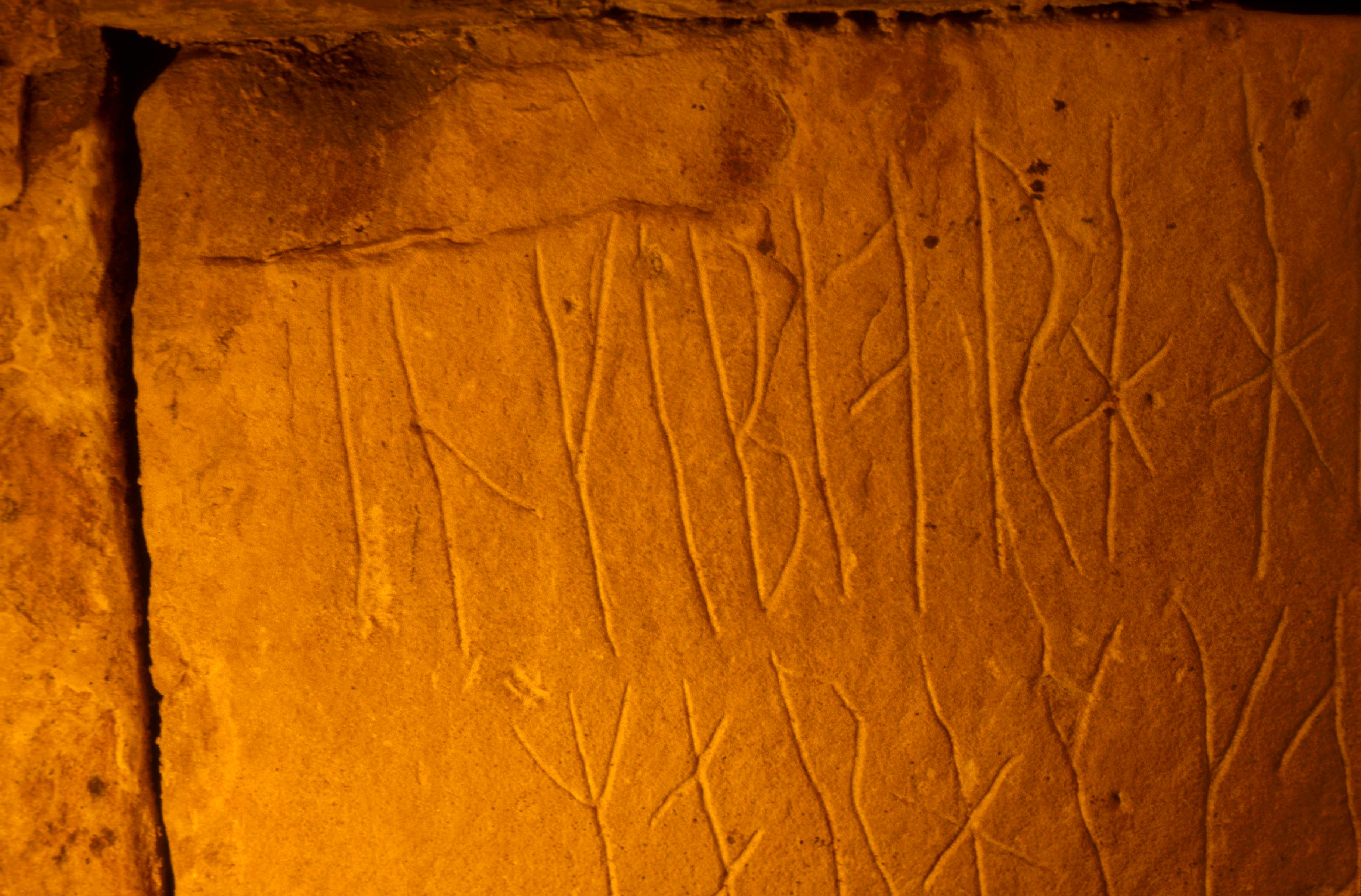 Photo courtesy of VisitScotland
Photo courtesy of VisitScotlandSome of the inscriptions tell of a great treasure that had been carried away from the tomb.
Is this just imagination working after a few ales, or was there once a treasure hidden in Maeshowe?
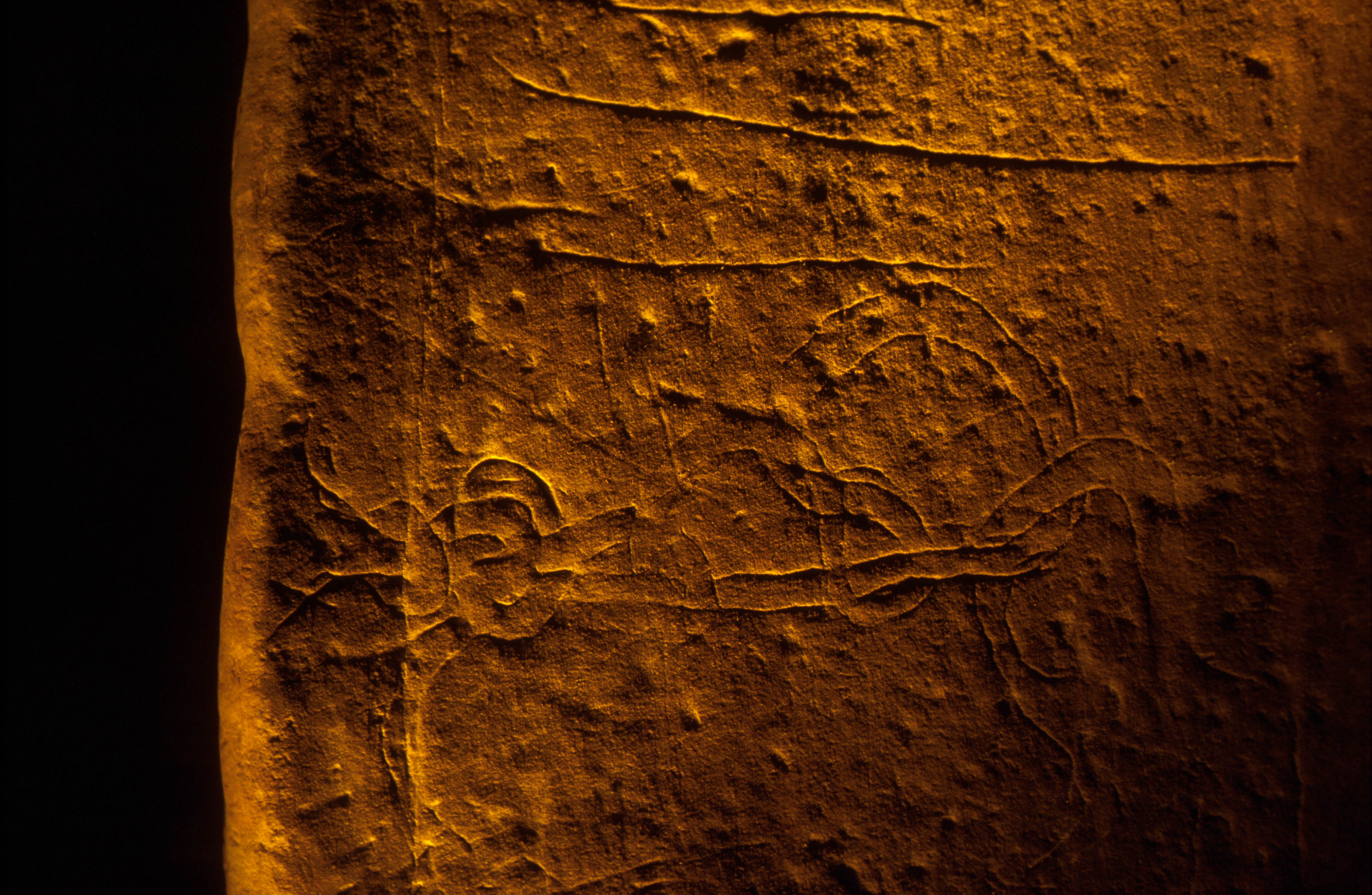 Viking knotted serpent - Photo courtesy of VisitScotland
Viking knotted serpent - Photo courtesy of VisitScotlandWe will never know for certain, but one thing we can be sure of is that the treasure mentioned would not have been Neolithic. Ornately carved and polished stone objects would not have impressed the silver-hungry Vikings.
Could the treasure spoken of in the runes have been buried with a high-ranking Viking who reused the chamber at the time that the bank was restored?
Who knows?
Cryptic carvings
It's not only Viking runes carved into Maeshowe. The Neolithic builders also left their mark.
Their strange, geometric shapes are not as deeply carved as the Viking symbols because Neolithic people didn’t have metal tools.
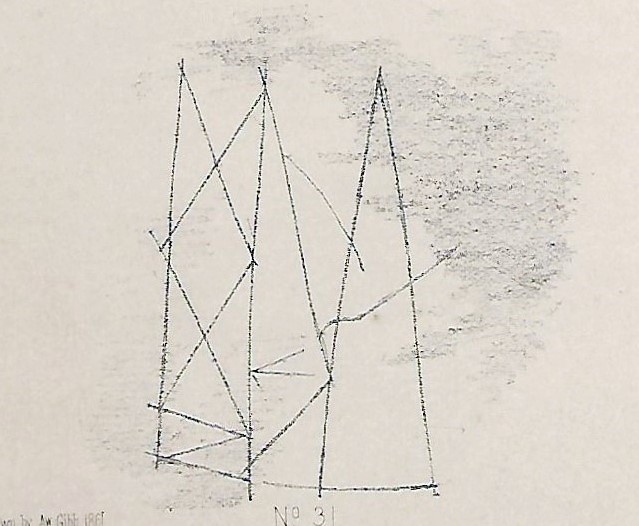
Many more carvings were found by Dr Colin Richards and a small team of archaeologists around 2000. They were given permission to spend the night in the tomb to look for Neolithic carvings.
The only lights came from hand-held electric torches, which they shone obliquely across the wall to pick up the faint scratches.
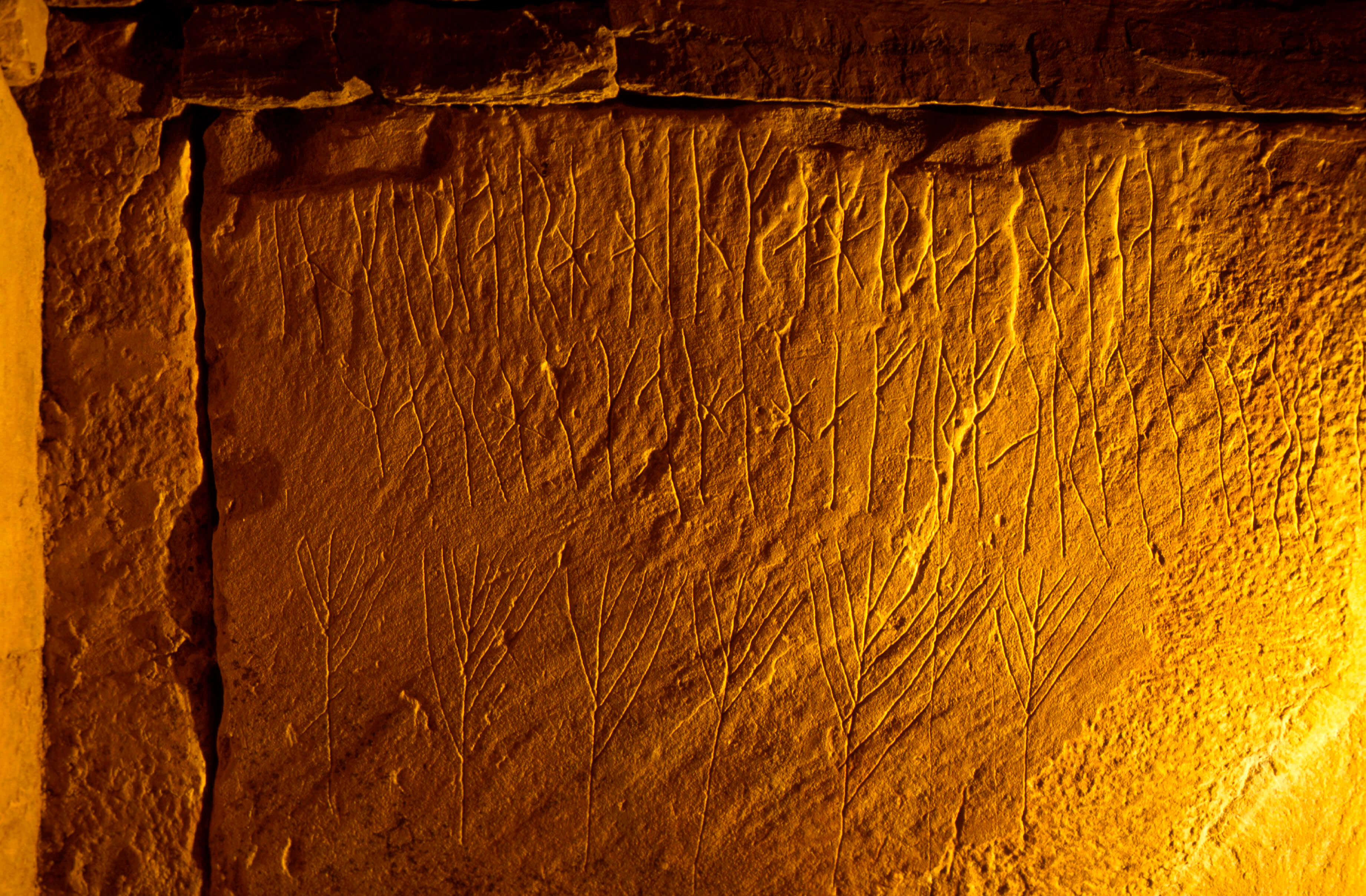 Photo courtesy of VisitScotland
Photo courtesy of VisitScotlandI was invited to join them, but like an idiot I declined, thinking that a nice warm bed and a good night’s sleep was preferable to a dark, cold night in the tomb.
I deeply regret that now. These days I’d jump at the chance!
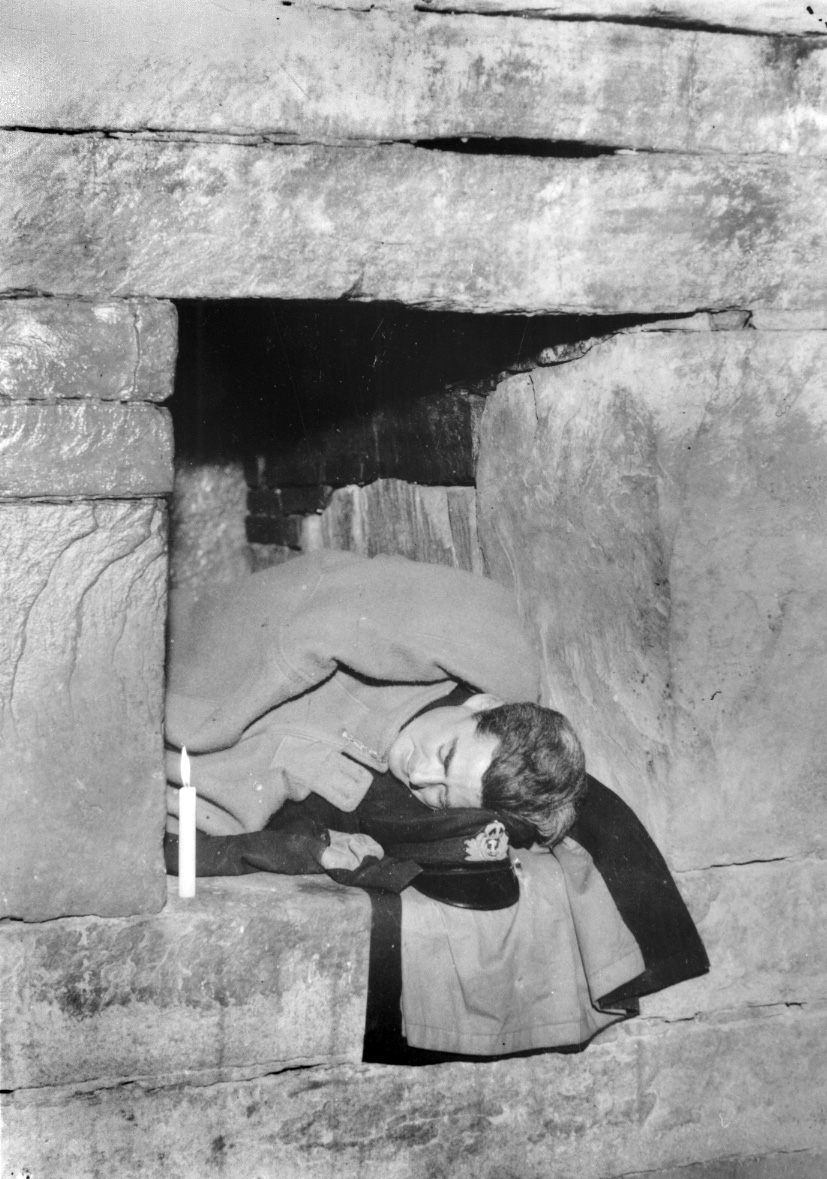 RNVR officer Lt. Peter Hill sleeping overnight in Maeshowe on the summer solstice, 1945. Photo courtesy of Orkney Library & Archive. Special thanks to David Mackie for the story.
RNVR officer Lt. Peter Hill sleeping overnight in Maeshowe on the summer solstice, 1945. Photo courtesy of Orkney Library & Archive. Special thanks to David Mackie for the story.
Midwinter solstice at Maeshowe
The most remarkable feature of Maeshowe is its alignment with the sunset at the midwinter solstice.
For about three weeks on either side of the shortest day of the year, the setting sun sends its rays, like a finger of light, creeping along the passage at Maeshowe to strike the back wall.
As the world has wobbled slightly on its axis during the past 5,000 years, it is possible that the sunlight would have illuminated the chamber at the back.
The Barnhouse Stone, standing in a field some distance from the tomb, is perfectly aligned between the entrance and the setting sun.
As the sunlight penetrates the tomb it sits right above that standing stone.
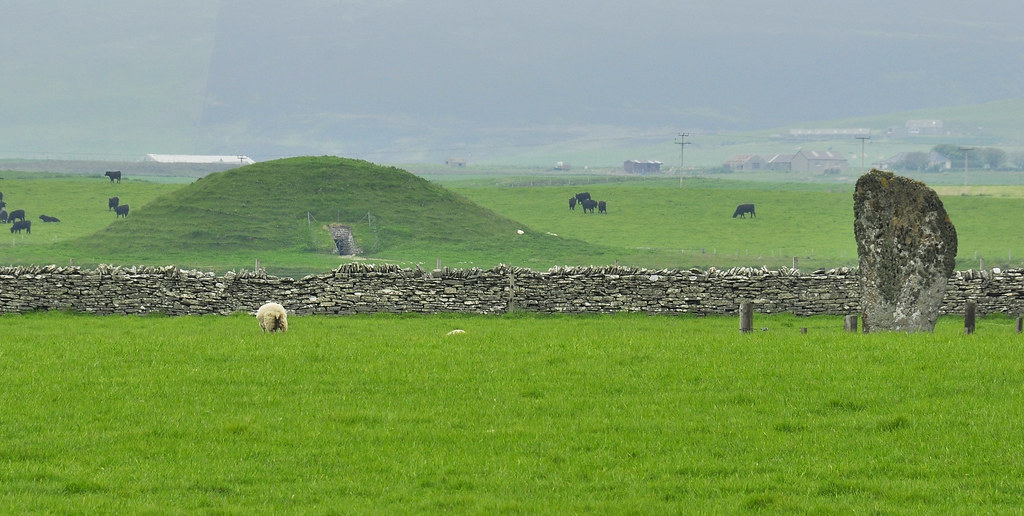
So, what does this mean?
The obvious connection is between death and rebirth.
The weak midwinter sun goes into the tomb, but from midwinter on it will grow in strength and the days will start to get longer.
Is bringing the sunlight into the tomb a way of bringing new life to those who have passed into death and are now classed as ancestors?
Do the rays of the sun carry away the souls of the dead?
Or was Maeshowe built as a tomb for the sun itself? The sun enters the tomb and then disappears from view, apart from giving one last flash as it reappears from behind the Ward Hill of Hoy, briefly illuminating the central chamber once more.
Is the sun going into the hill, as if entering into its tomb?
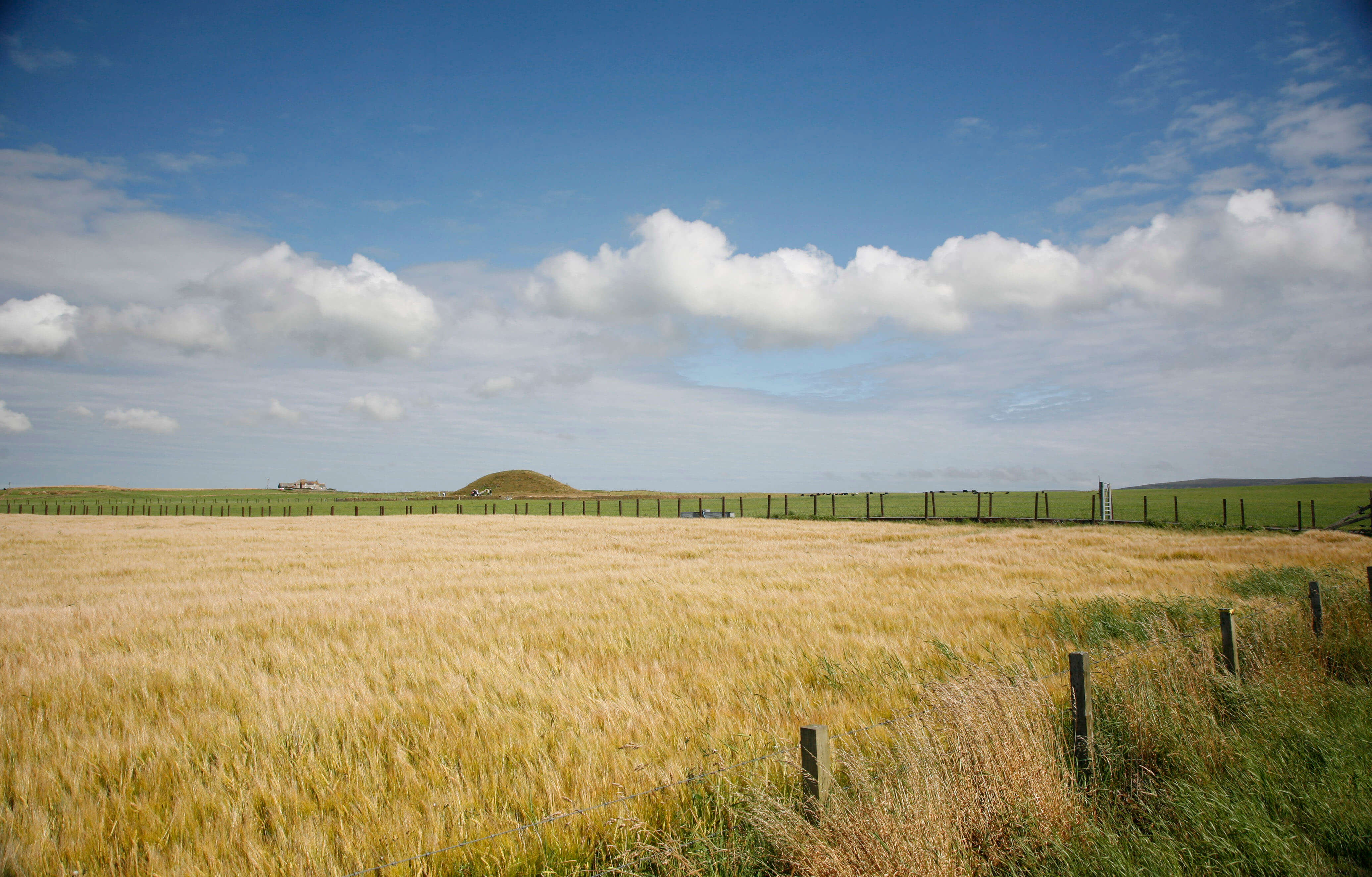 Photo courtesy of VisitScotland
Photo courtesy of VisitScotlandMaeshowe is not like other tombs built for the ancestors. It's much more elaborate, grander in its design and built - with huge effort - to impress.
Was the piece of human skull that was found in the tomb the last mortal remains of the important Viking who may have been buried there when the bank was rebuilt in the 9th century?
Was the lack of bone due to the fact that it never contained any? Maybe the bones that we might expect to find in Maeshowe were not just thrown out by later visitors clearing the tomb.
These are just my own thoughts. Though I'm not aware of any, it seems likely that someone must have proposed similar theories by now .
Final reflections ...
An earlier painting of the mound, before Farrer dug into it, shows a conical mound. But since the Vikings had been messing around with it, there's no reason to think that the painting shows Maeshowe as it originally looked.
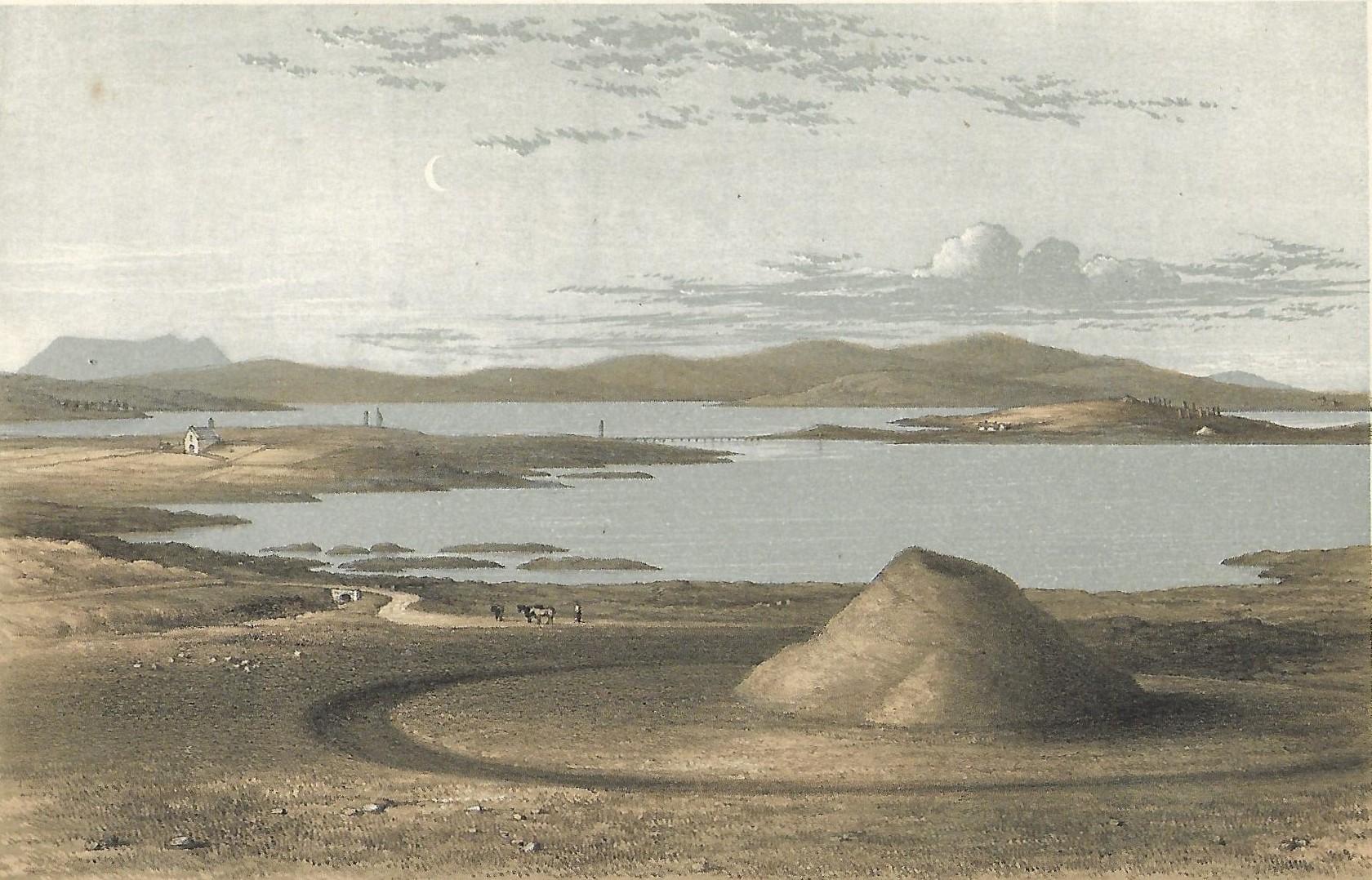 This old painting shows a conical mound, as well as Maeshowe's proximity to the Stones of Stenness and Ring of Brodgar.
This old painting shows a conical mound, as well as Maeshowe's proximity to the Stones of Stenness and Ring of Brodgar.As the sun sets, it disappears behind the Ward Hill of Hoy, which resembles the shape of the present-day mound.
To me, Maeshowe looks like the Ward Hill in miniature. I wouldn't be surprised if this great mound was originally built to mirror the hill that the sun disappears behind at midwinter.
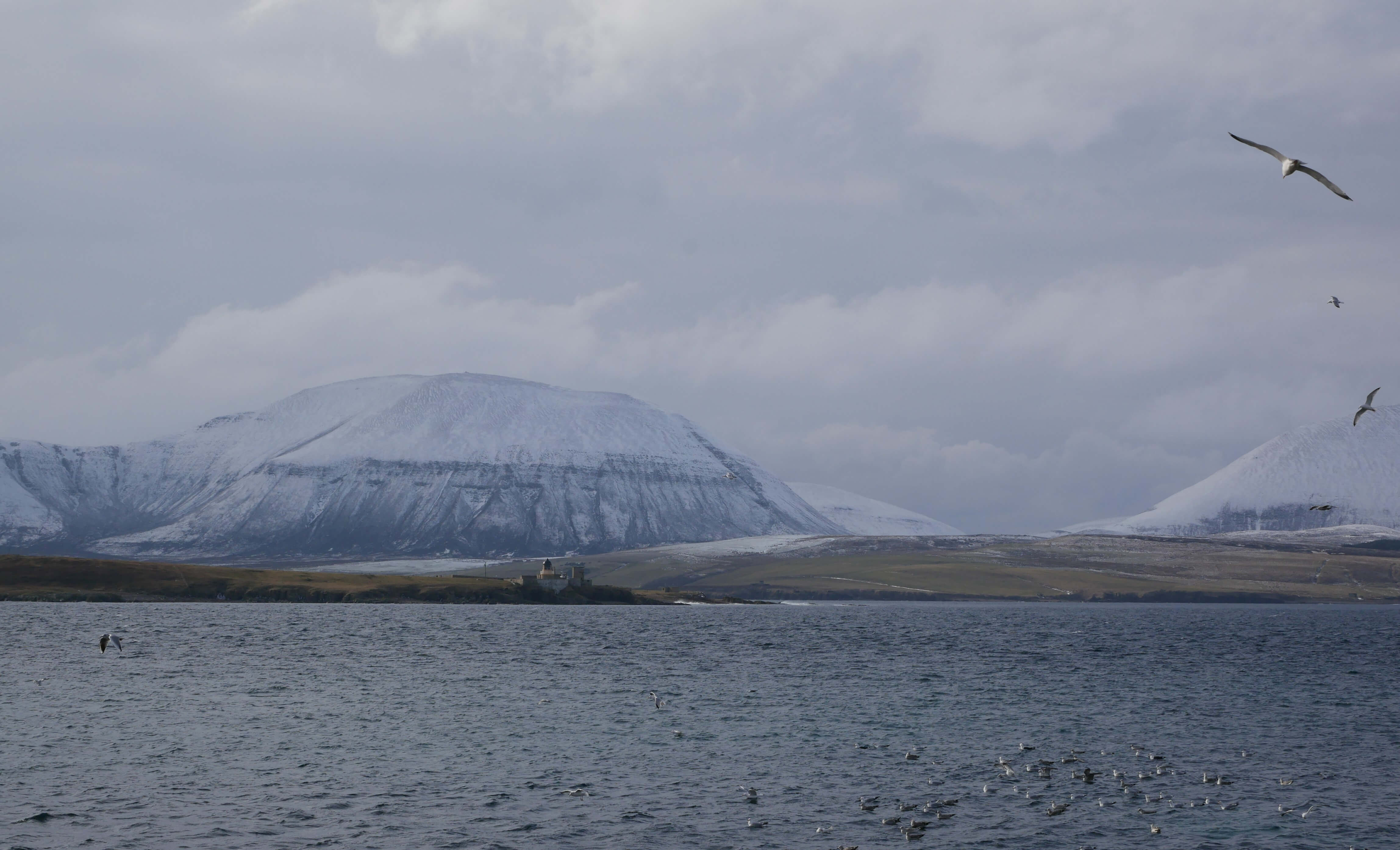
So many question marks!
There are always more questions than answers when we peer into the ancient past.
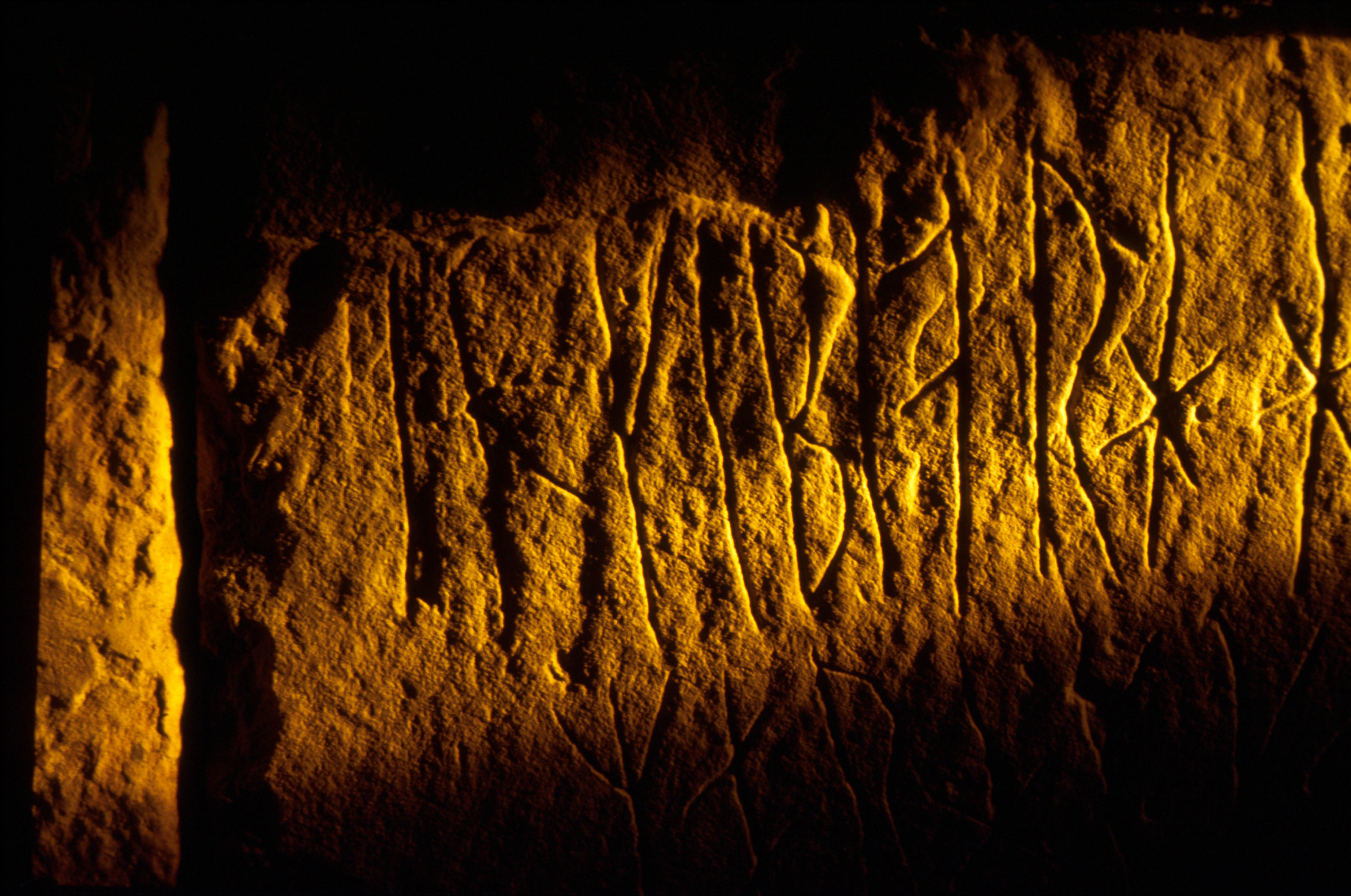 Photo courtesy of VisitScotland
Photo courtesy of VisitScotland
Now it's your turn ...
Go and see Maeshowe for yourself. What do you imagine?

How to visit Maeshowe
You have to have a guide to visit the tomb, and seasonal opening times apply:
1 April to 30 September:
Daily, 10am to 5pm
Last tour 4pm
1 October to 31 March:
Daily, 10am to 4pm
Last tour 3pm
- Your tour begins at the visitor centre.
- Check-in at the visitor centre 15 minutes before your tour start time.
- Access is via a low and long passageway.
- As Maeshowe is a very popular site and its capacity is limited, HES strongly recommended that you reserve your visit online to guarantee entry and avoid disappointment. You can do that here.
Find the Maeshowe Visitor Centre on our Orkney must-see attractions map

Mermaid image (Rhonda's pages) and storyteller image (Tom's pages), and all other illustrations except where noted are here by the courtesy of our dear friend - Stromness author, artist and historian, Bryce Wilson MBE, who owns all copyrights. Thanks, Bryce!

